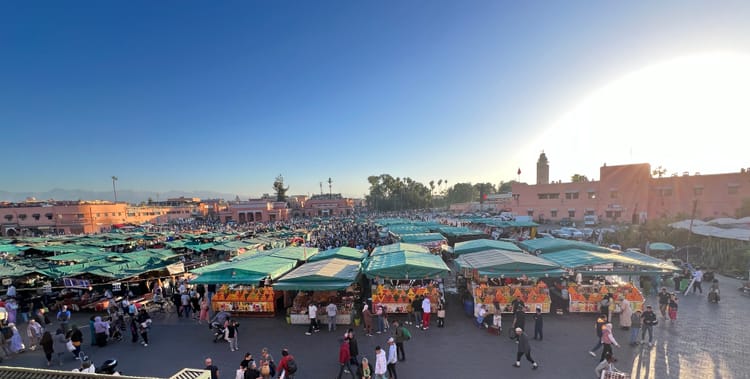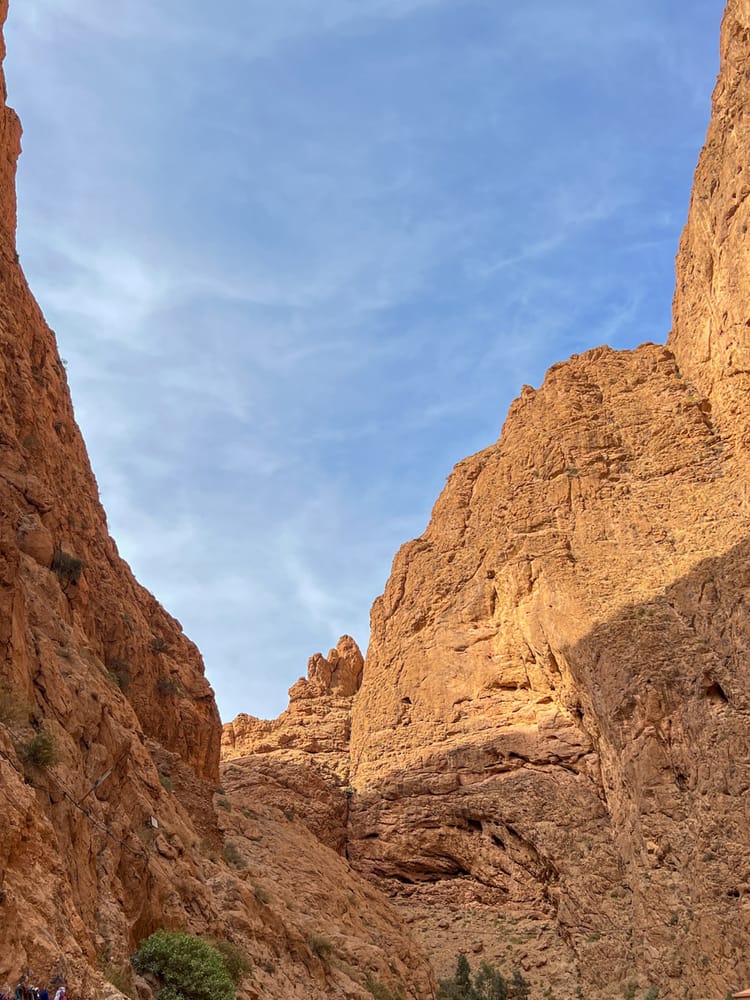SUNSETS, STARS AND SUNRISE; OH MY

On to the desert! John and I went to the Sahara ten years ago, hoping to see the sunset, the stars, and the sunrise. As had happened on that trip, everywhere we were, there was rain—even in the Sahara! So there were many clouds but no sunset, stars, or sunrise.
That gave me one more reason to go back to Morocco.
On our way, we travelled past Lake al-Hassan near Errachidida, created by a gravity dam built in 2001. The dam is used for "potable water, irrigation, and protecting downstream areas and dams against floods and other situations." It was enormous.
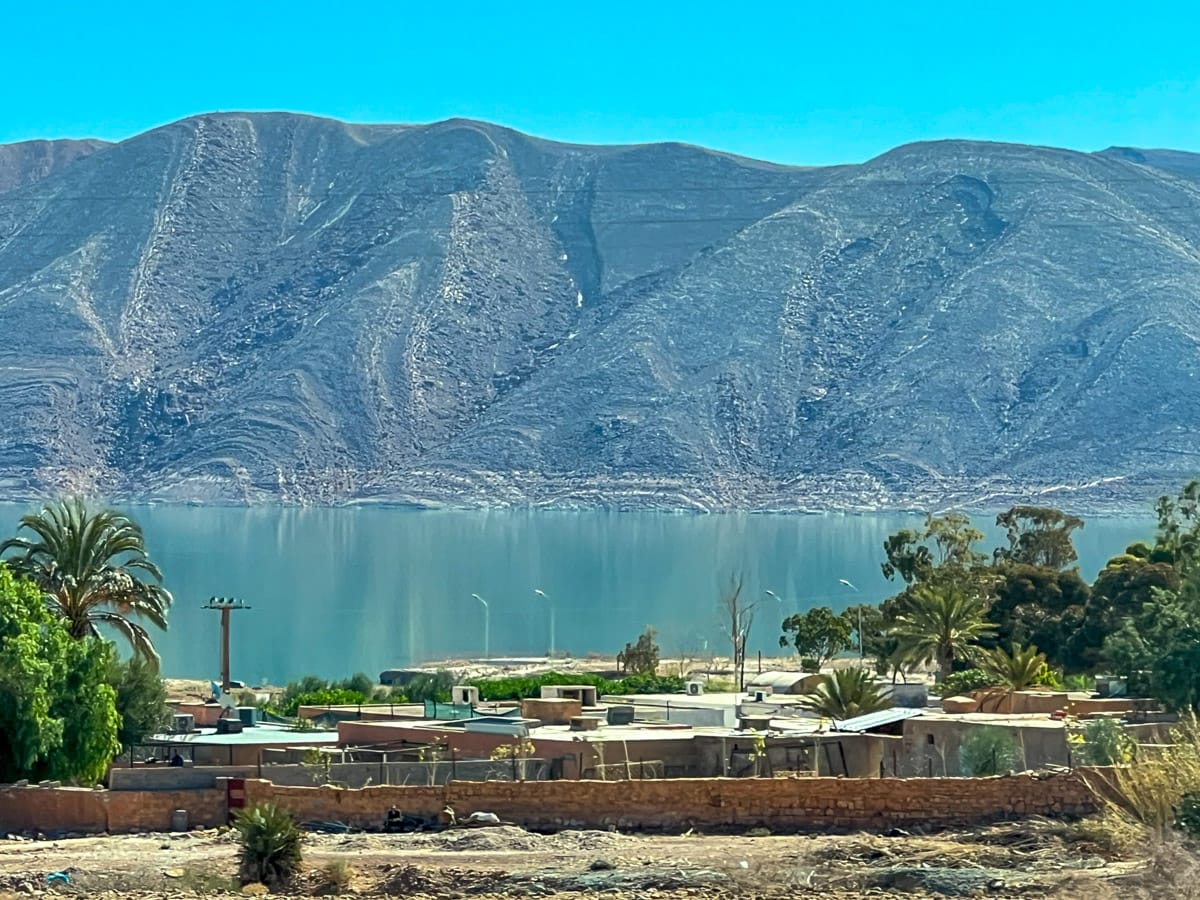
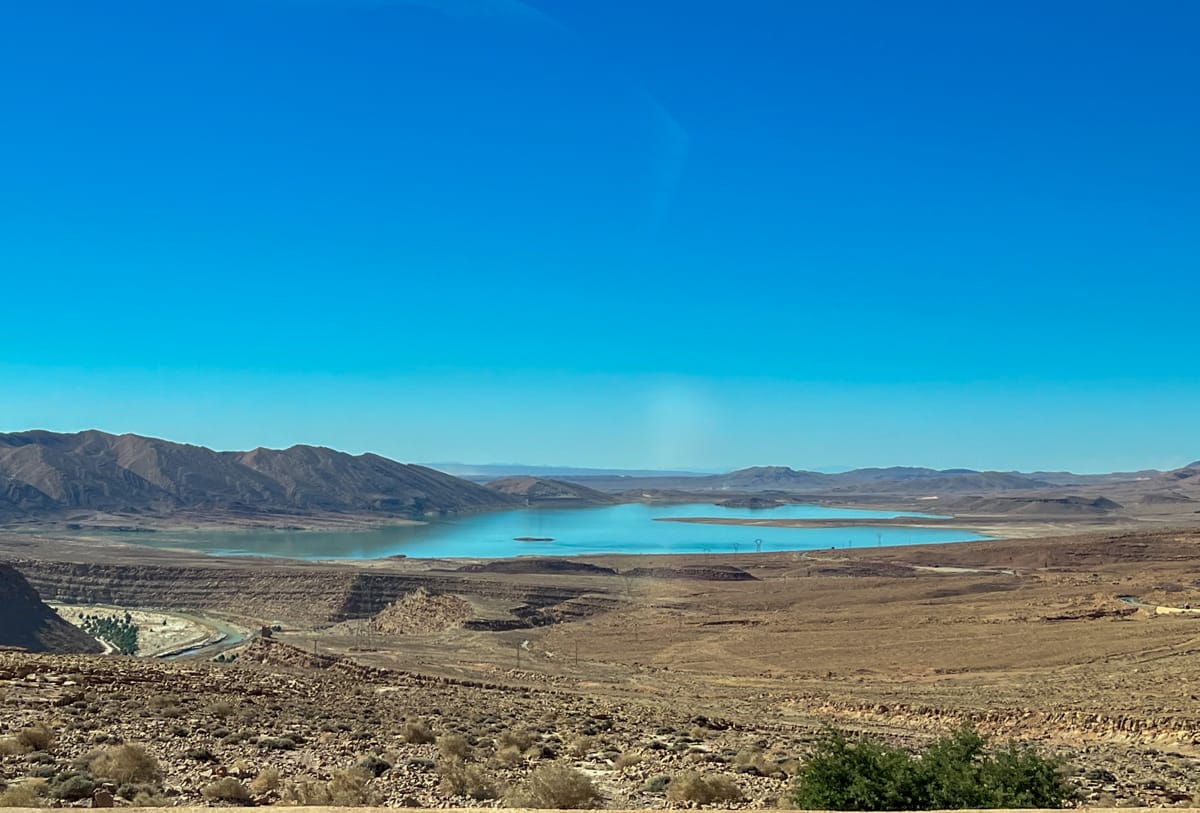

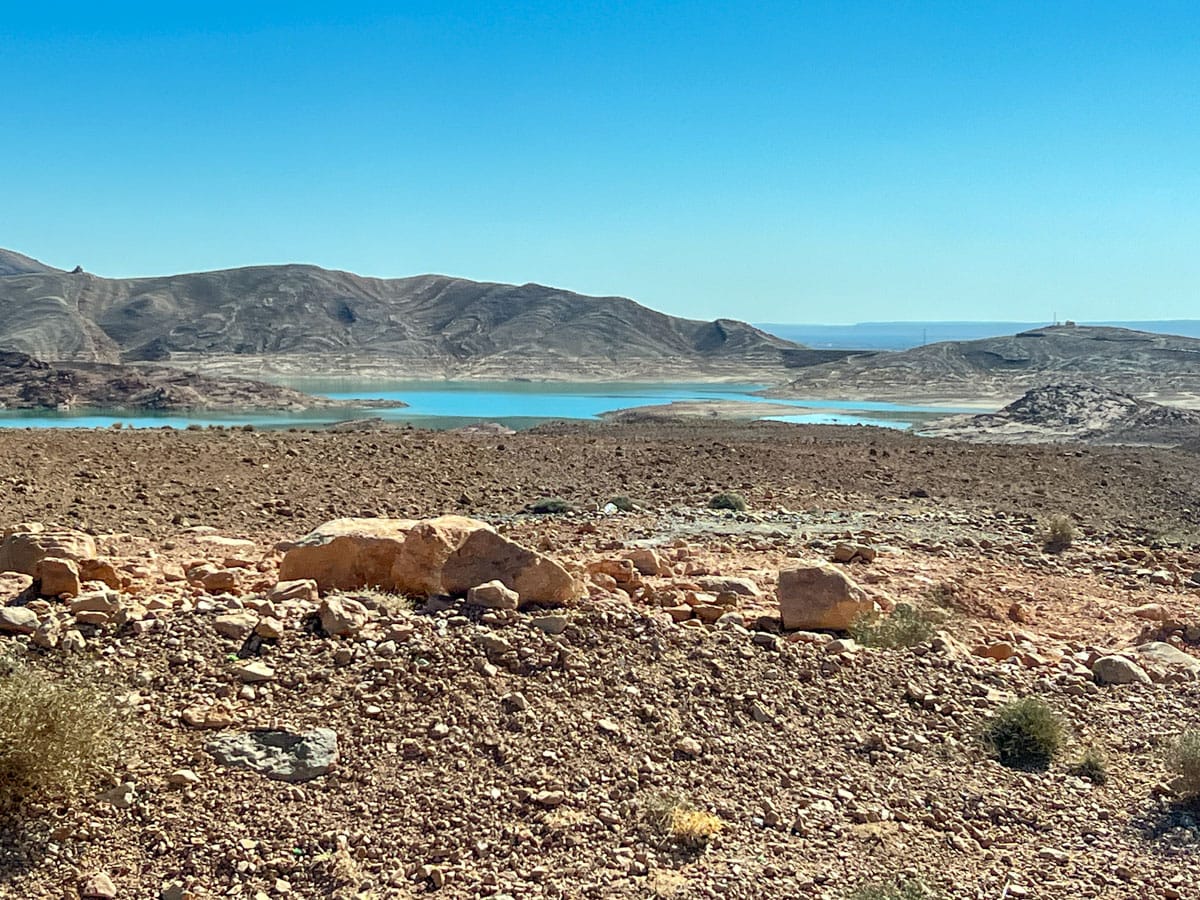

This area has cultivated fields and palms. It also has a history of forest fires. In 2019, 2,540 palm trees and 1,500 olive trees were lost; in 2021, 5000 palm trees and 1000 olive trees were burned. There are still many palm trees in the area. Despite opposition to the planting, the government plans to plant five million date palm trees by 2030.
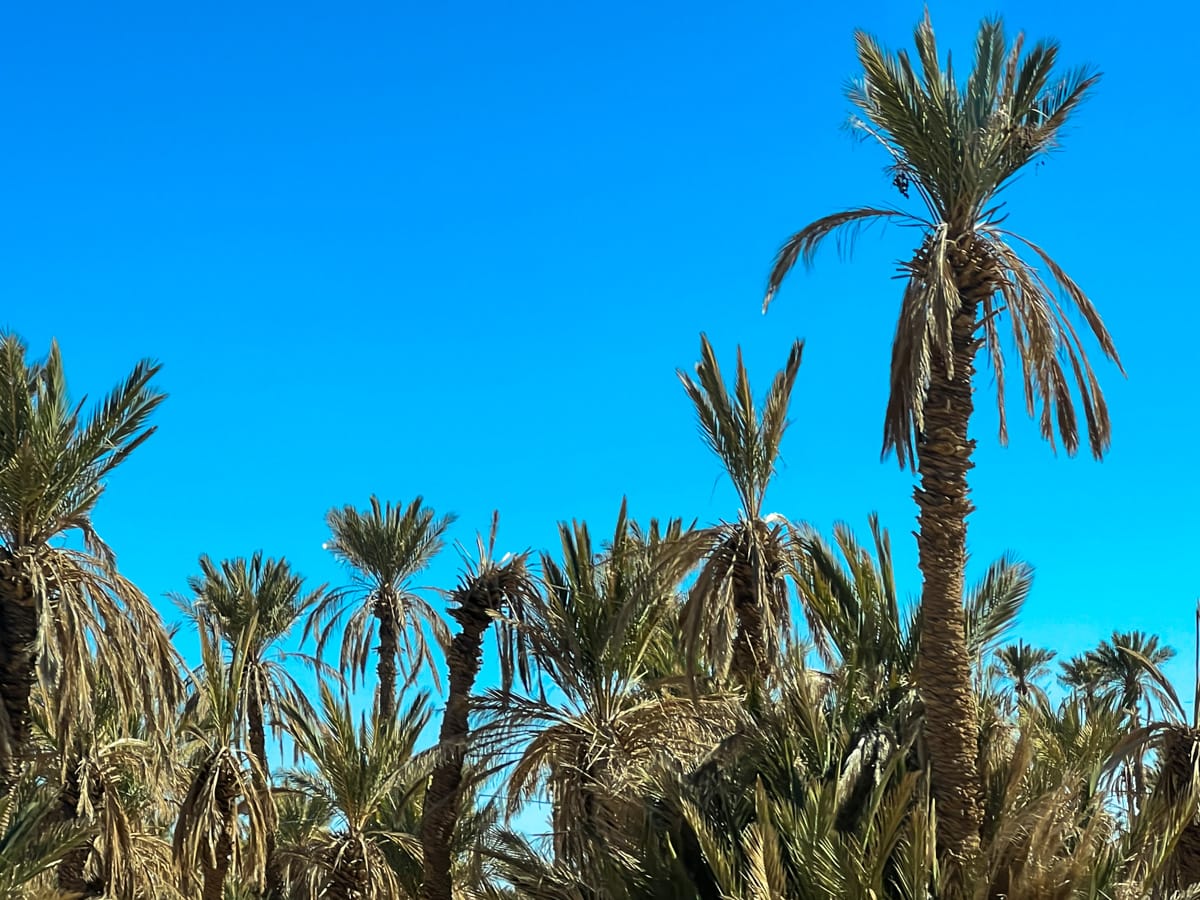
We continued to Rissini, where Mohammed, Mustapha, and their parents live. Mohammed took me to his parent's home, and his mother presented us with a lunch of bread, grilled sardines, cucumbers, tomatoes, olives, and tea. I followed the men's example and made sandwiches. It was lovely to have the opportunity, once again, to see their parents.
Then, it was time to head to the desert. We went to meet our camels and the camel driver. I could have gone to our camp by car but opted to ride the camel. If you are ever with me in Morocco or any other country, and I say I'm going to ride a camel, remind me how much I hate it. They are beasts of burden, but I will not be their burden again!


Along with our camel driver, Ibrahim- honest, driver is what they are called - was a gentleman from South America, Alejandro. We headed out into the Sahara with my camel ahead of Alejandro. It was so silent except for the camel hoofs on the sand as Ibrahim led them toward the camp. It was amazing. To our right was the largest dune in the area.
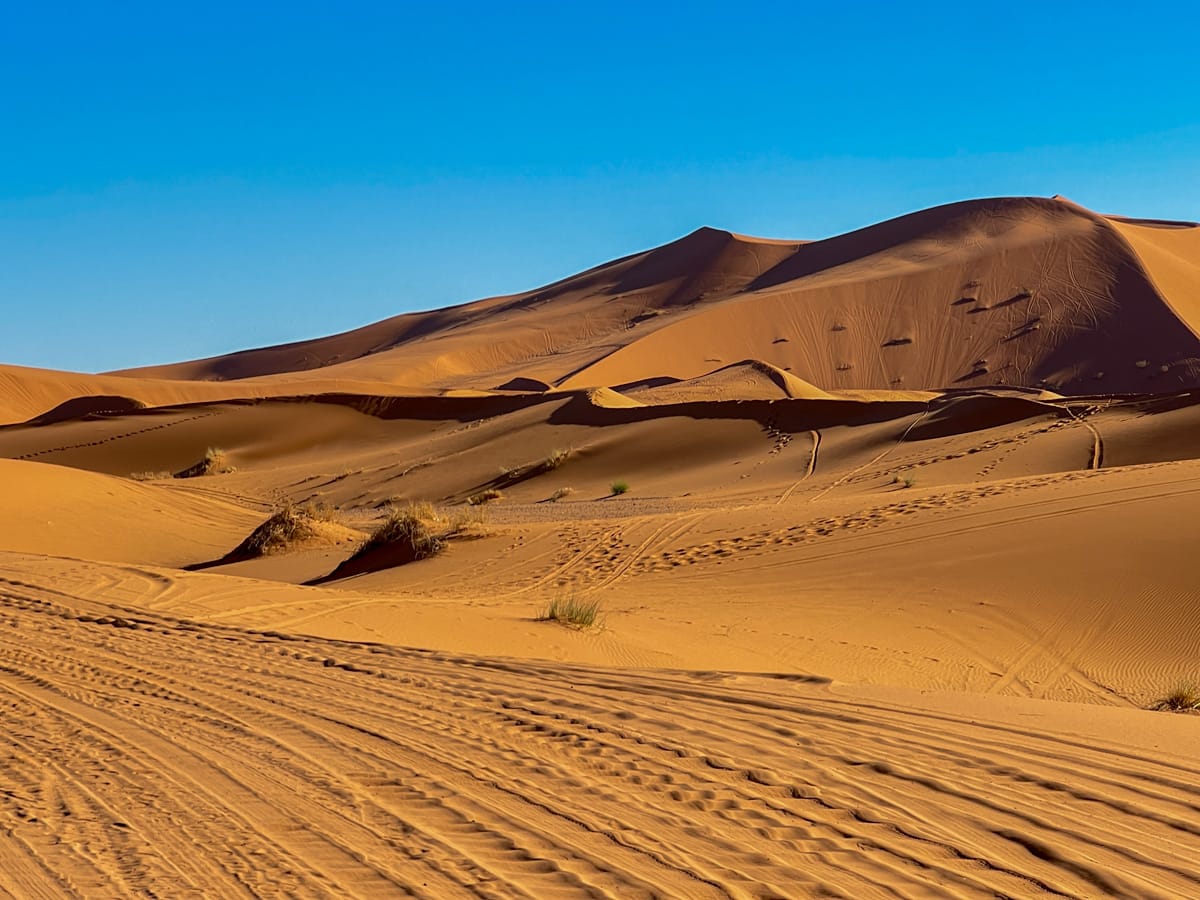
We continued. I was starting to regret my decision to ride a camel when the camel tried to throw me off him. After that, I hoped a car would appear, and I could hitchhike!
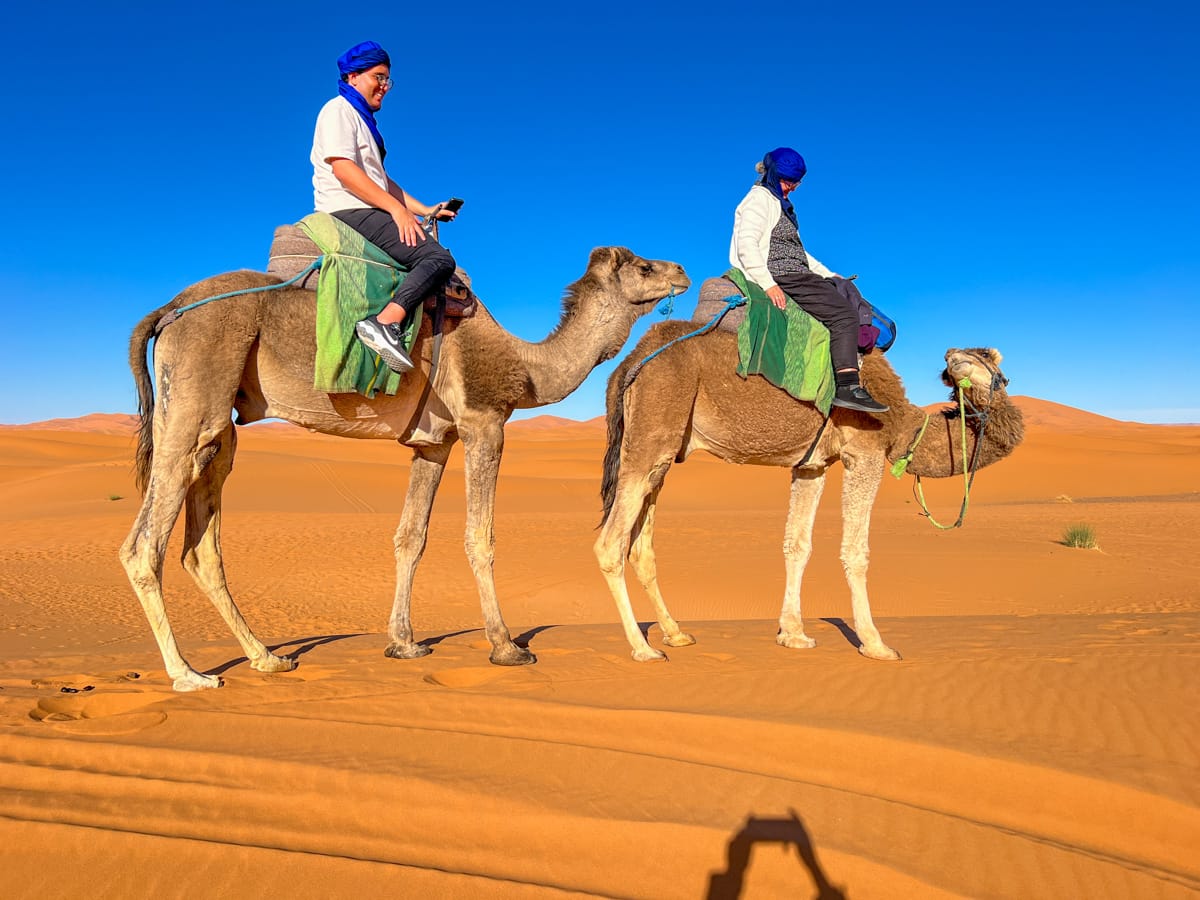



We got to a good point to view the sunset. We were the first people out there and had quite a long wait to see that incredible sight. We sat and watched. Ibrahim decided to entertain us by doing some gymnastics down the dune.


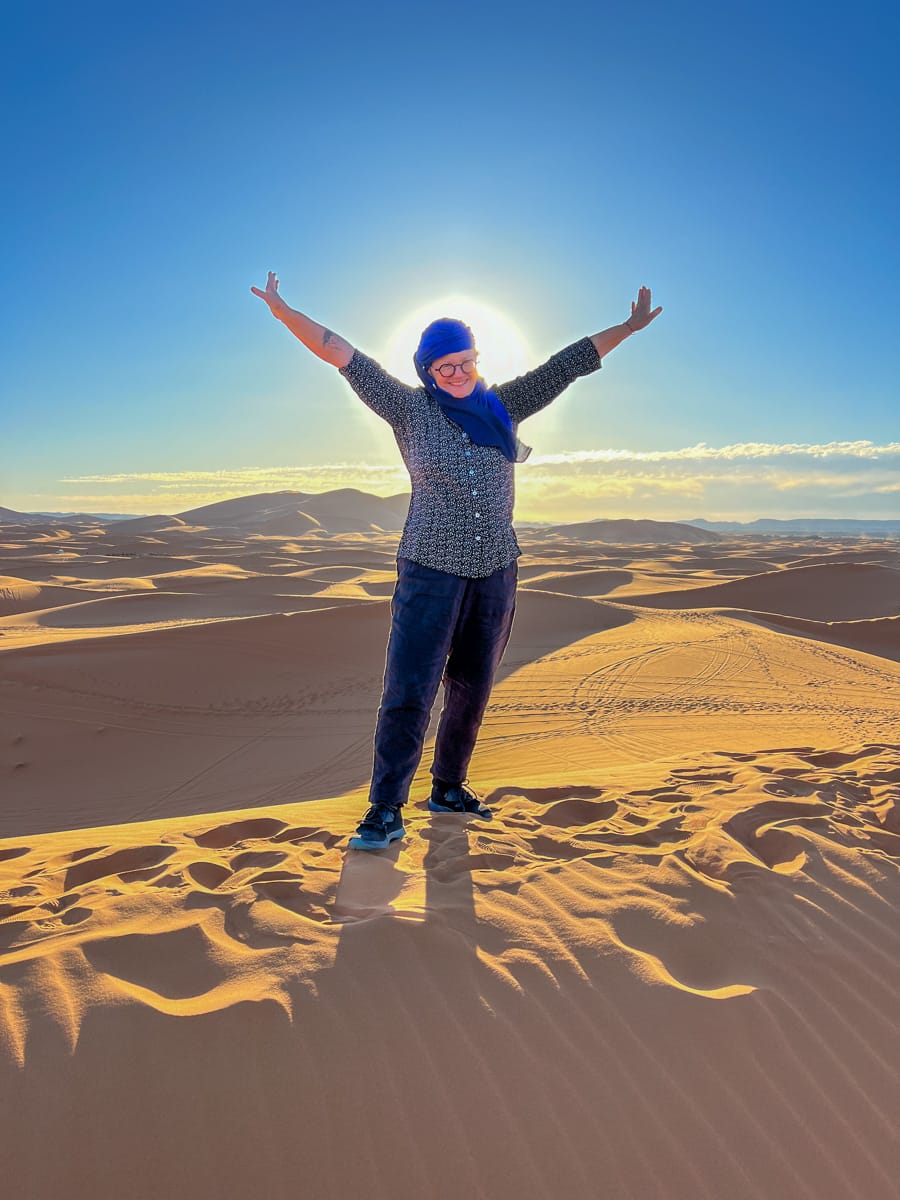
As we waited, we watched one group after another arrive on camels and stop in different areas to wait for the sunset.
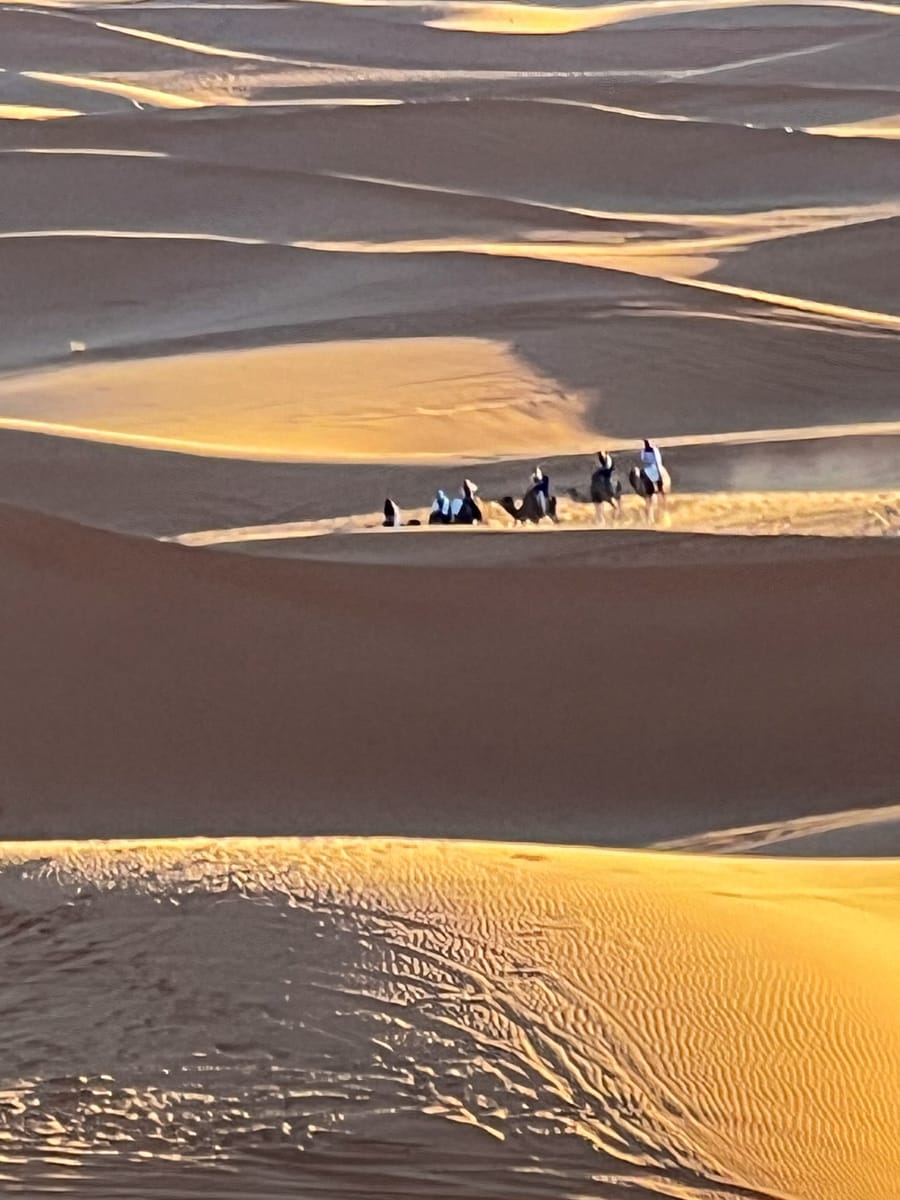
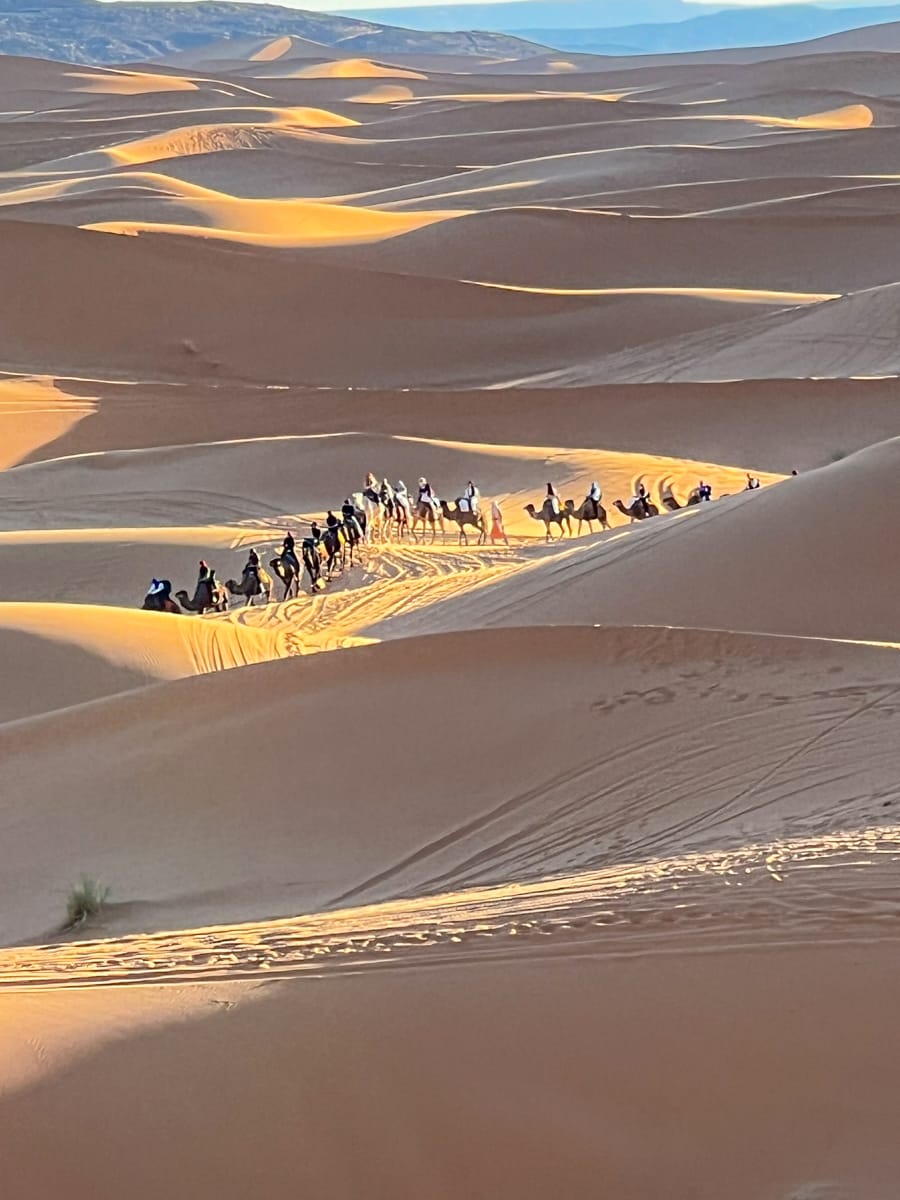
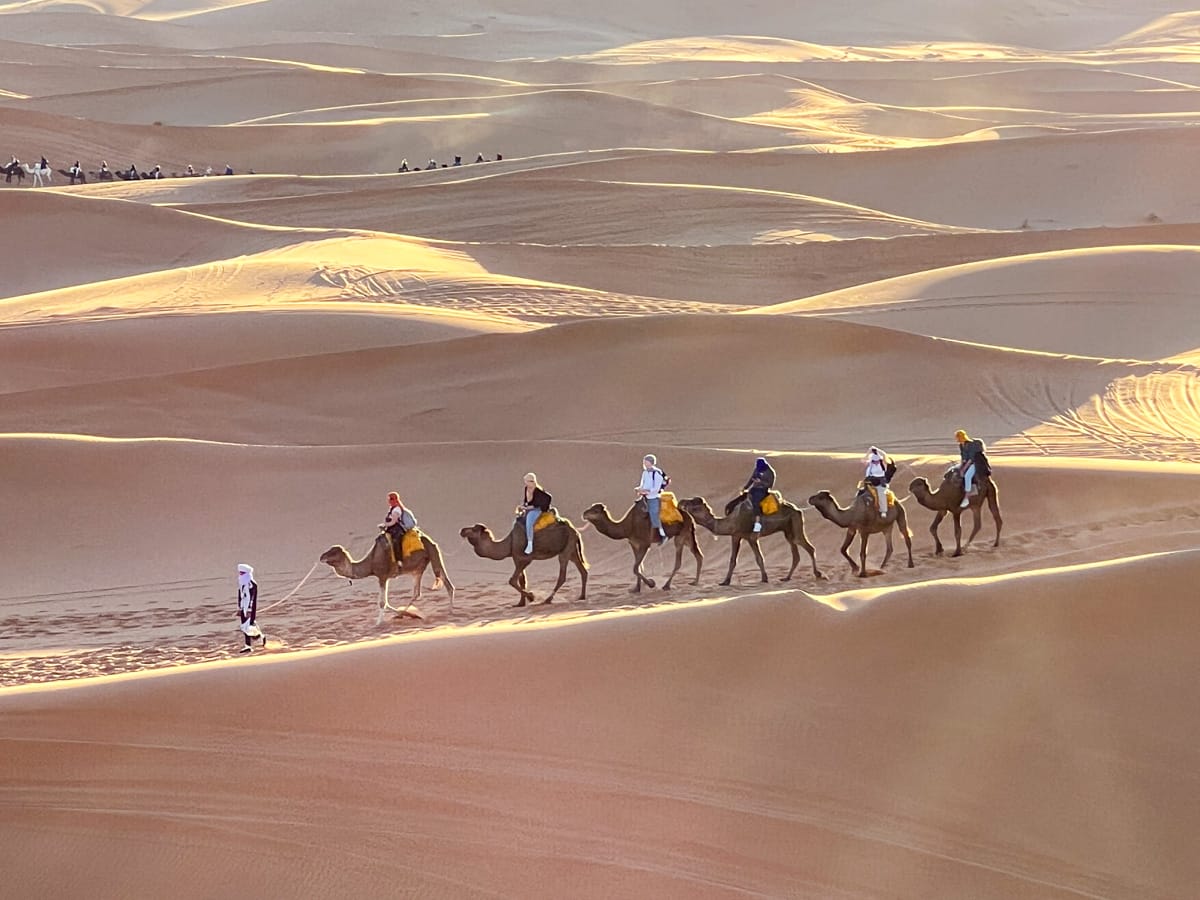
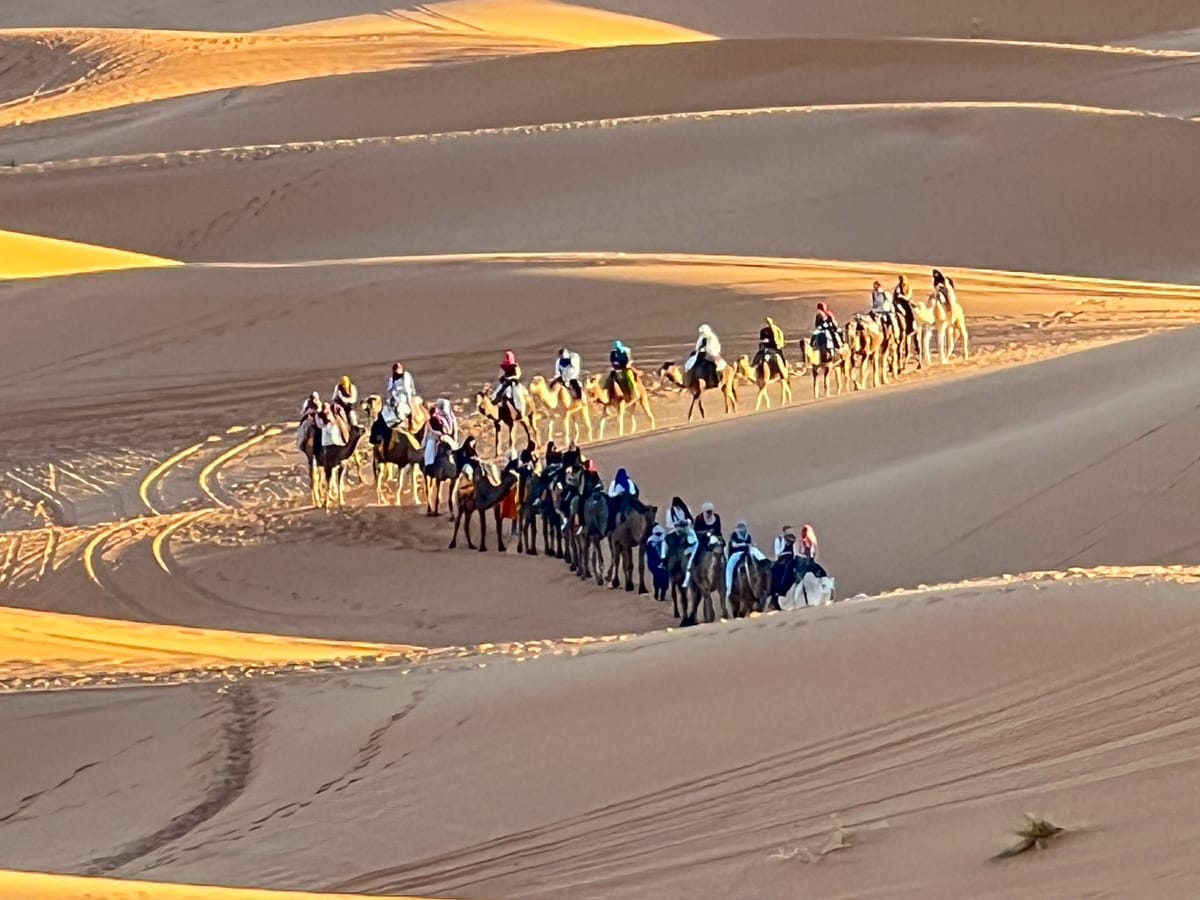
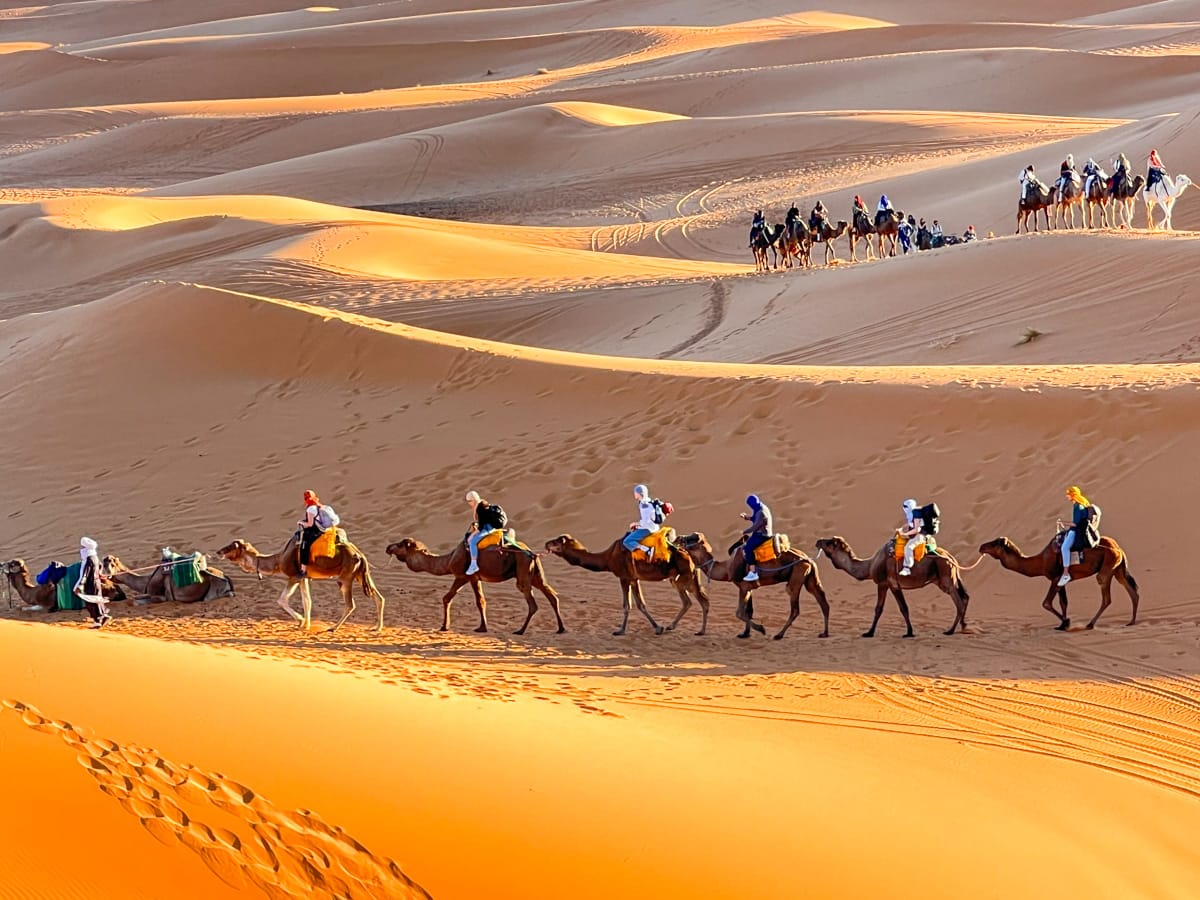


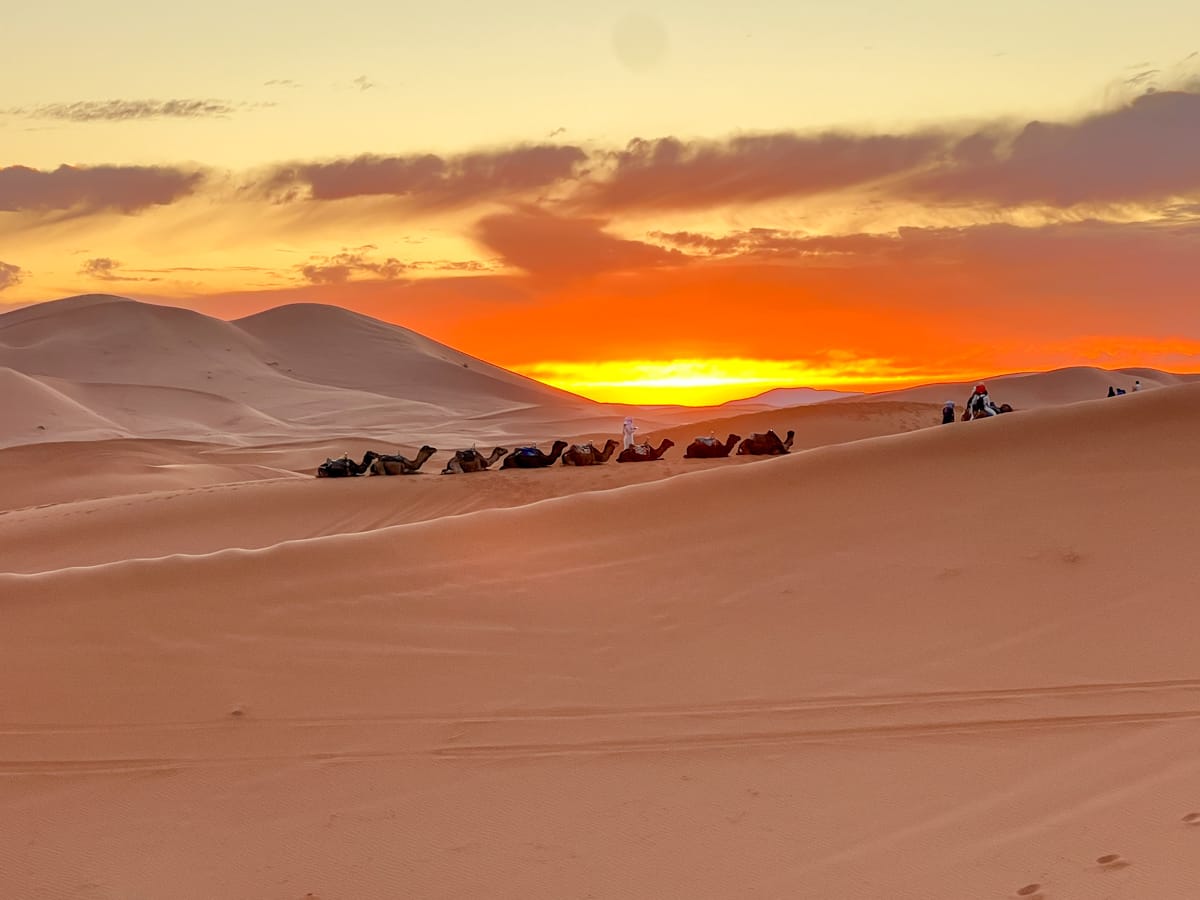
One car arrived just as the sun was dipping. I wanted to run down and get in the car for the rest of the ride! Kidding! However, I was frustrated that the car parked, with its doors open, directly aligned with my view of the sunset. It was spectacular! At Alejandro's request, we started off to the camp and realized that the sunset continued adding majestic light to the sunset. I continued to try to get that one mind-blowing photo as we went.
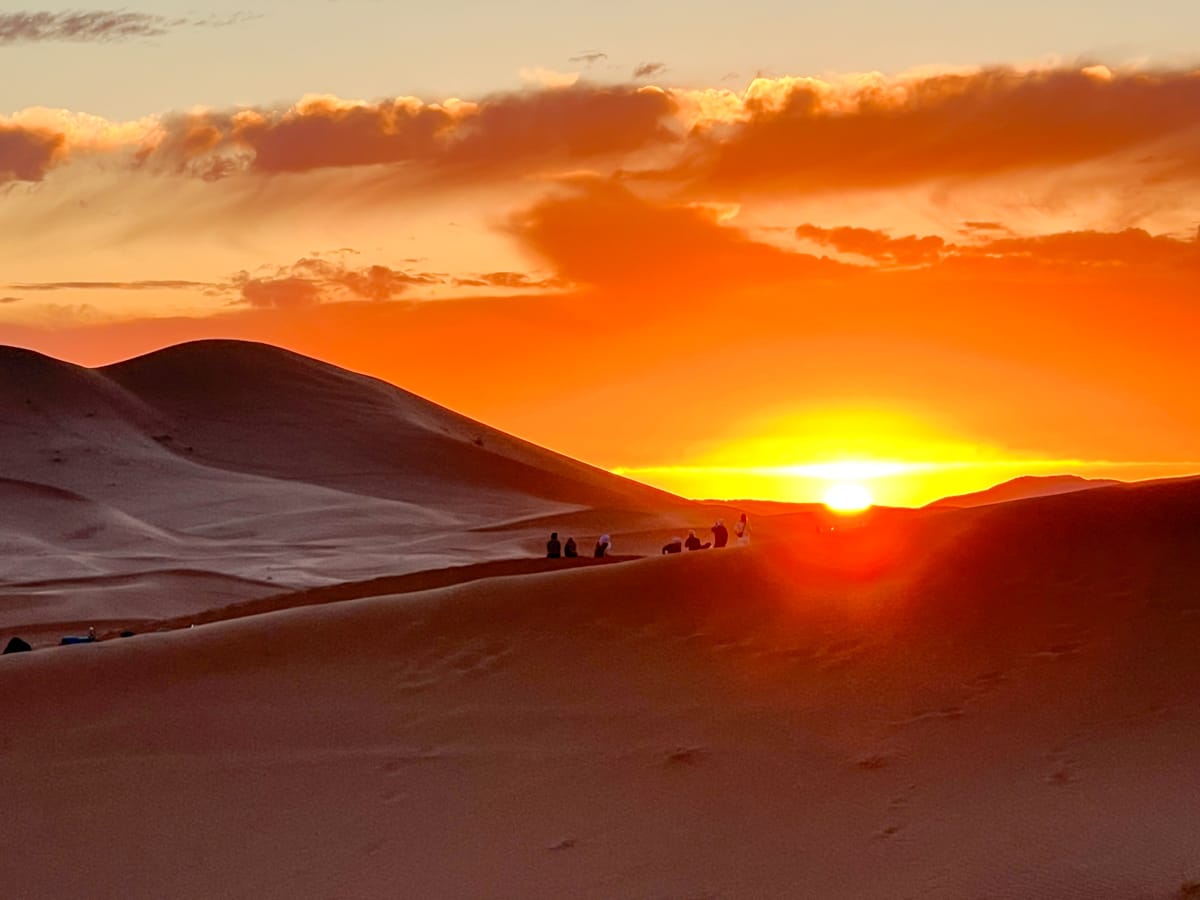
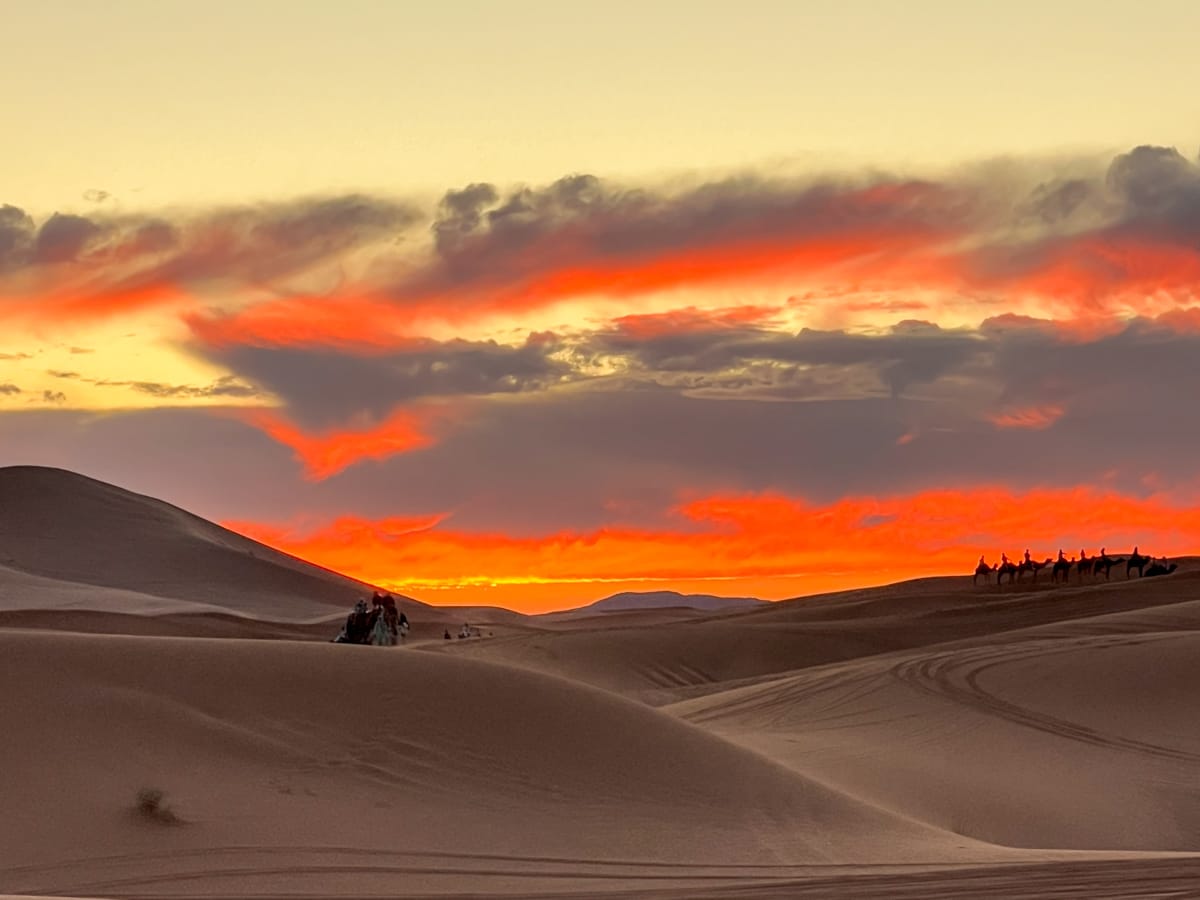
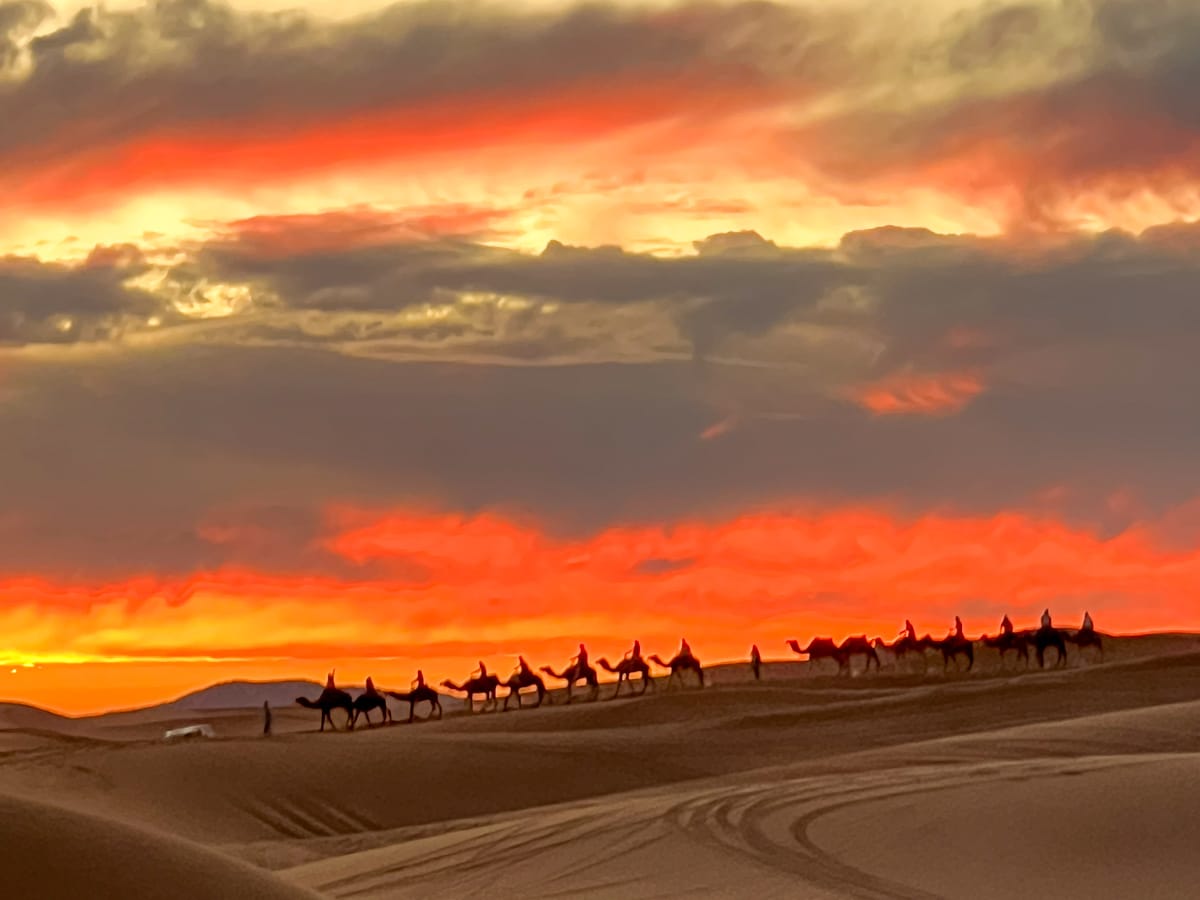
As we arrived at the camp, I was astounded by the changes to the camps from 10 years ago. At that time, our tent looked much like a Berber camp, with dark-coloured tents. This time, the camp tents were all white. I could see other camps on either side of us. I learned that the government has made changes in the past years. They now required that all the camps be on the edge of the desert and in only one area of the Sahara.

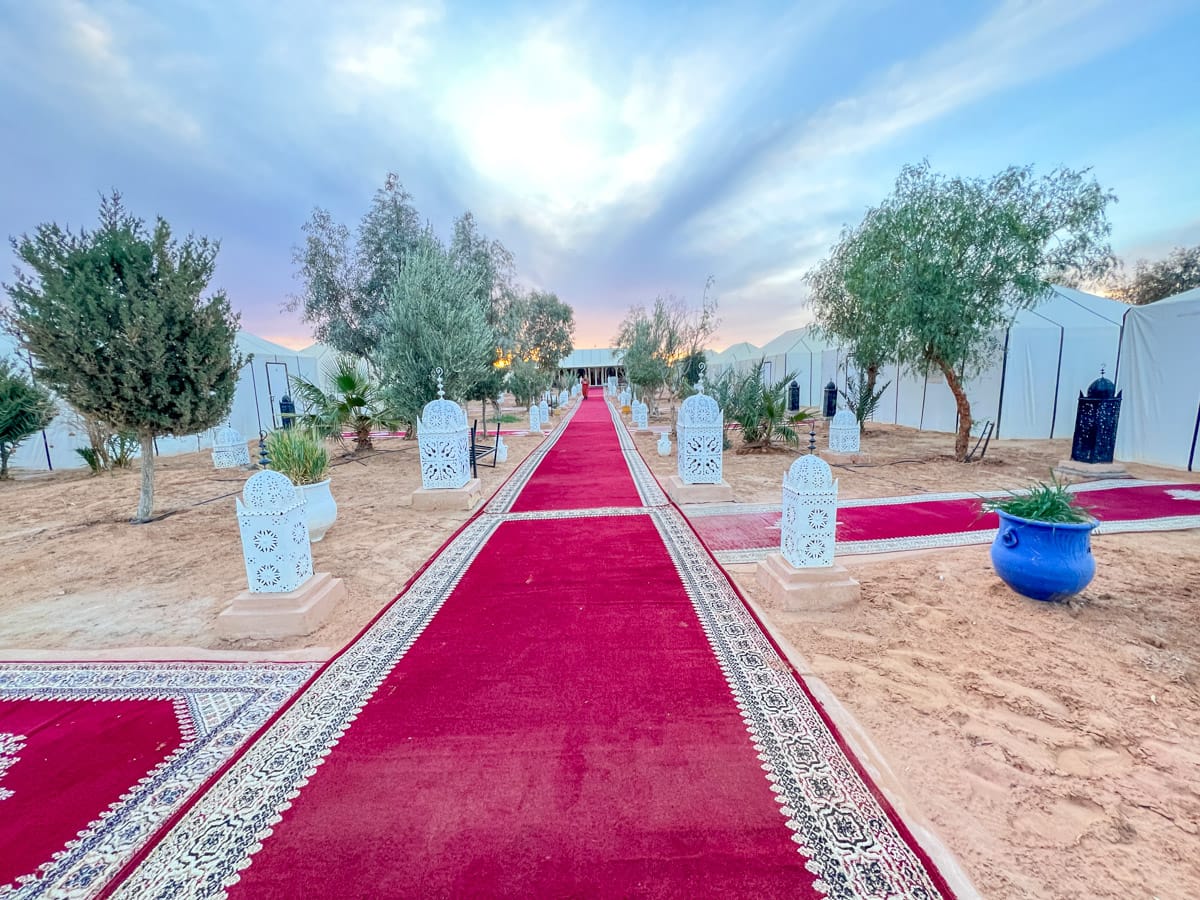
2014-2024
There was a long red carpet welcoming us to our individual tents. The rooms have one queen size bed and a second bed. Each tent is equipped with an enclosed toilet and an enclosed shower. Previously, you had a small tent with a regular bed and solar power, and there was one bathroom for the camp. Ten years ago, one person left the lights on at our camp, so eventually, the power ran out, and we needed our headlamps to go to the bathroom. So, I brought my headlamp with me this time, which was unnecessary.
Another change was that there was a separate large tent for dining. We had previously sat outside, watched the staff make food, and ate at a communal table. This time, we were separate from the other three people in the dining room. This was an unfortunate change, as one thing we remembered the last time was the conversation we had around that table with an exciting group of travellers.
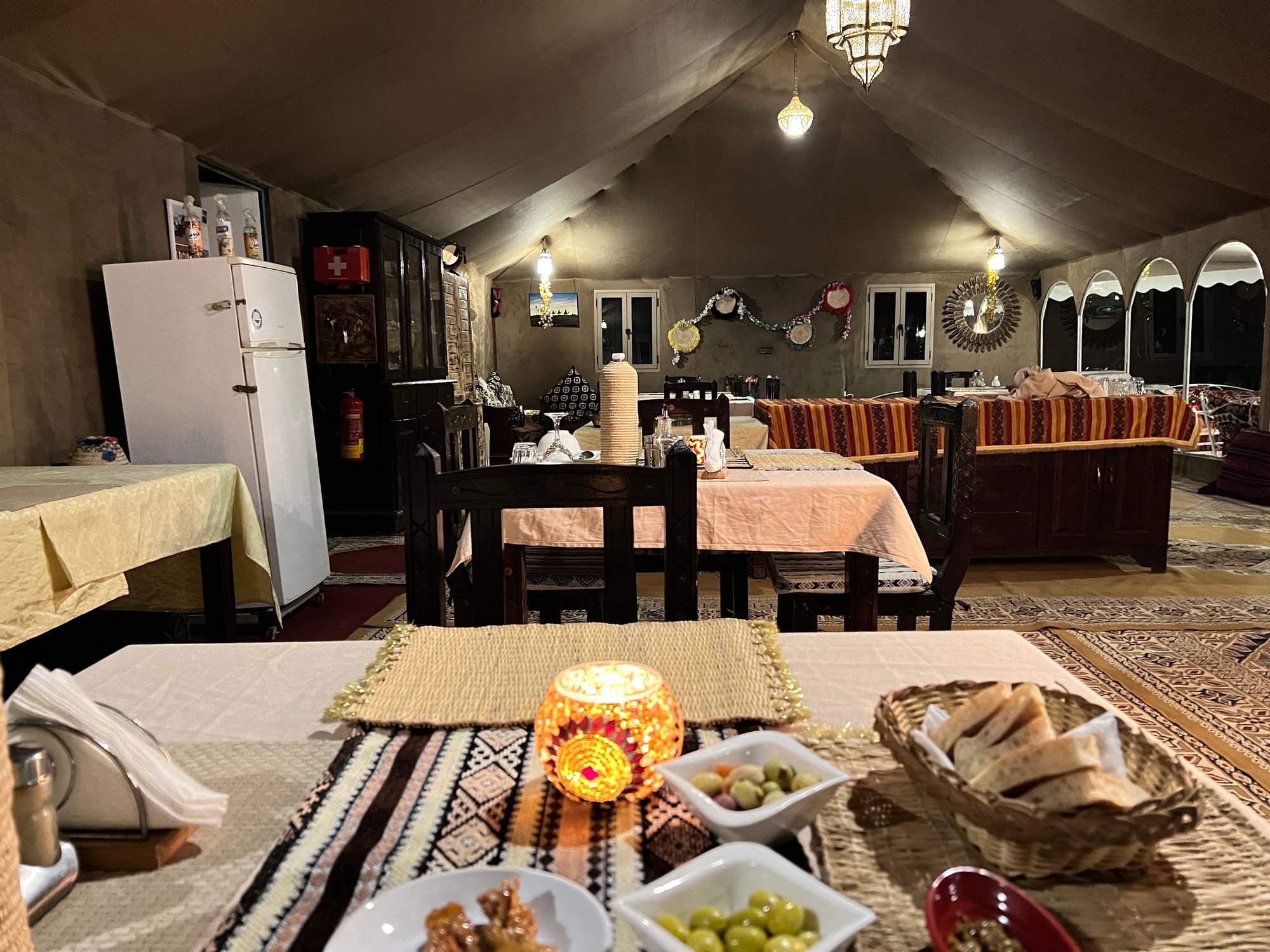
A djellaba and a hat were left for us to wear in our tents. As the night continued, we needed the warmth of the djellaba.


After dinner, we gathered around the fire, and the staff sang, played music, and encouraged us to dance around the fire. We could see the massive sky of stars and planets as the lights disappeared. Alejandro had a newer phone, and his camera captured the sky better than mine.


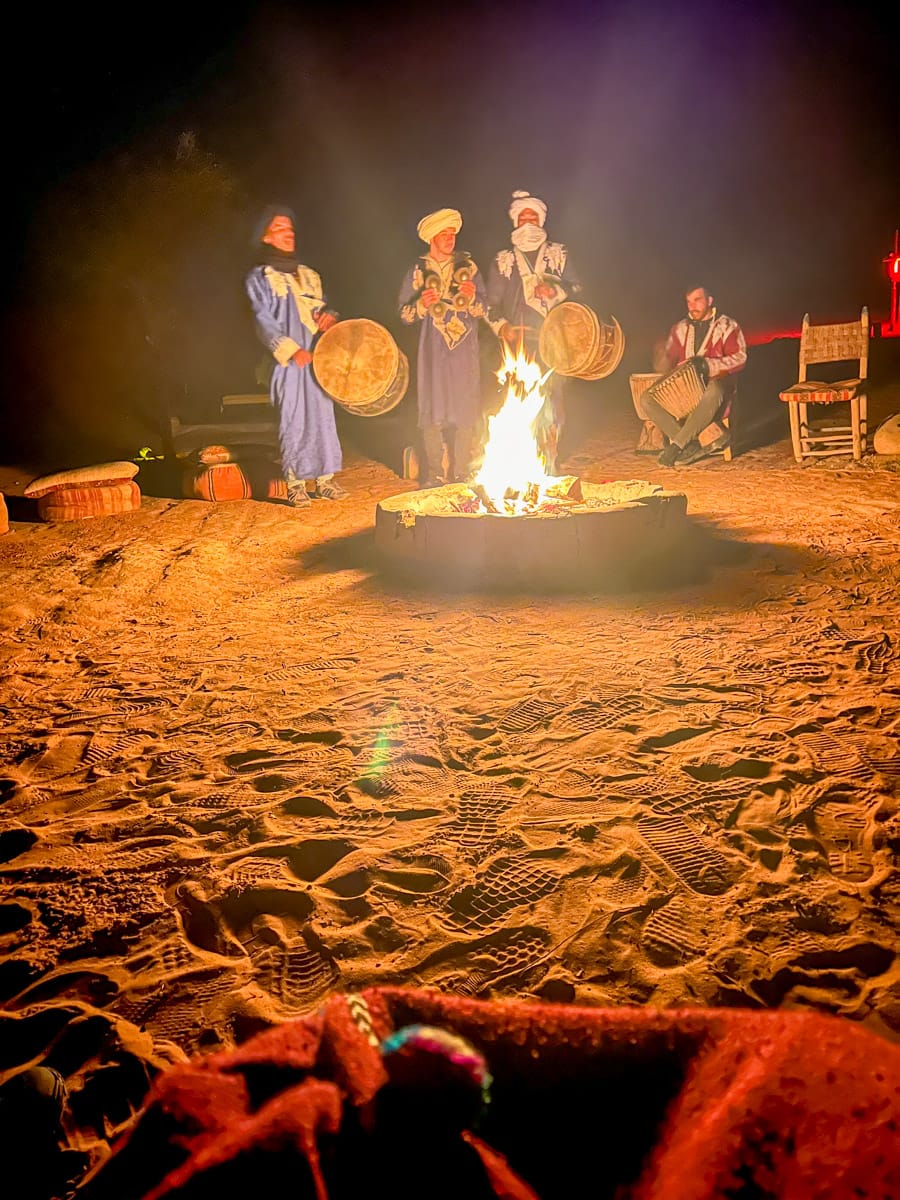
The following morning, we arose to watch the sunrise. Luckily, sunrise was at 8:30. It took me a few minutes to realize everyone else was sitting on a dune watching the sun. I had gone out to the back of the tents and then joined the others. Once again, it was stunning. So, job done, I gained the memories that I hadn't gotten the last time.
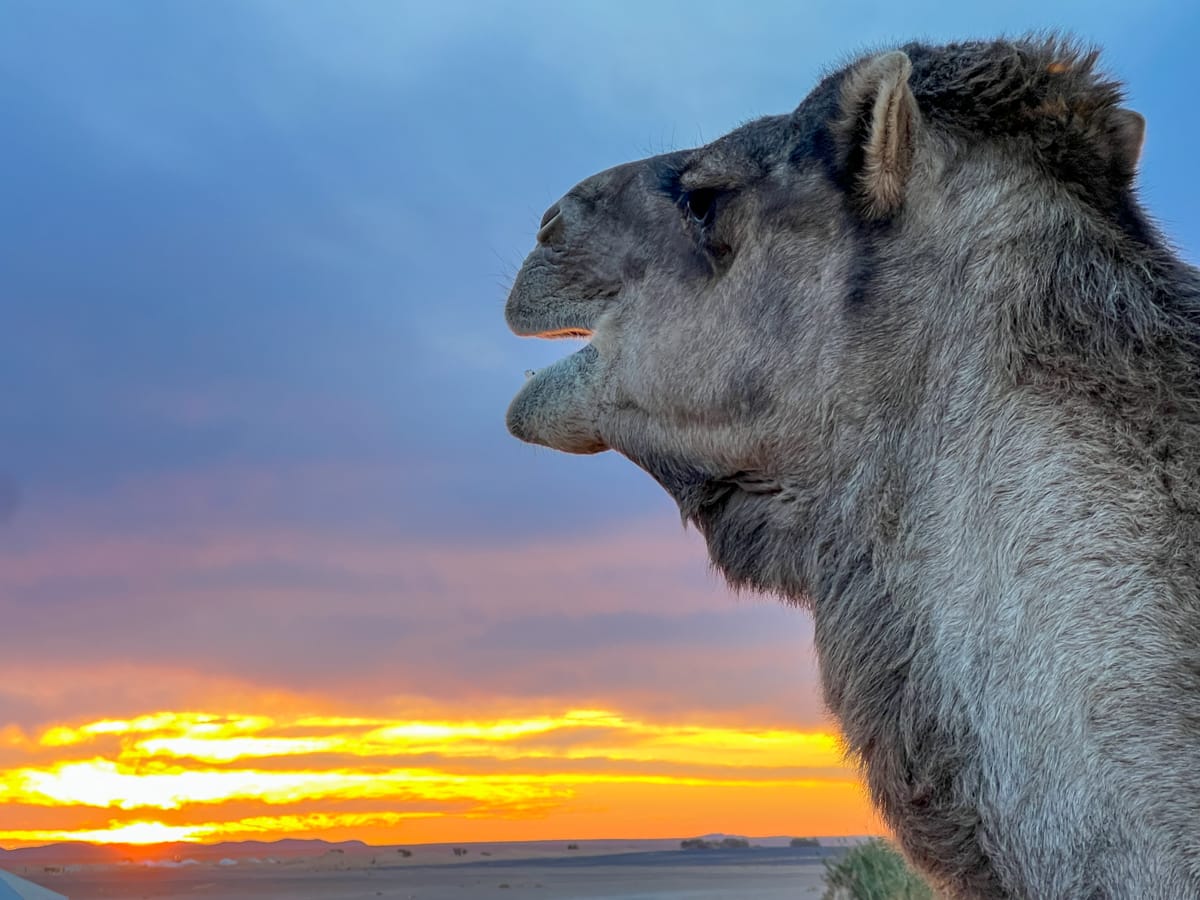

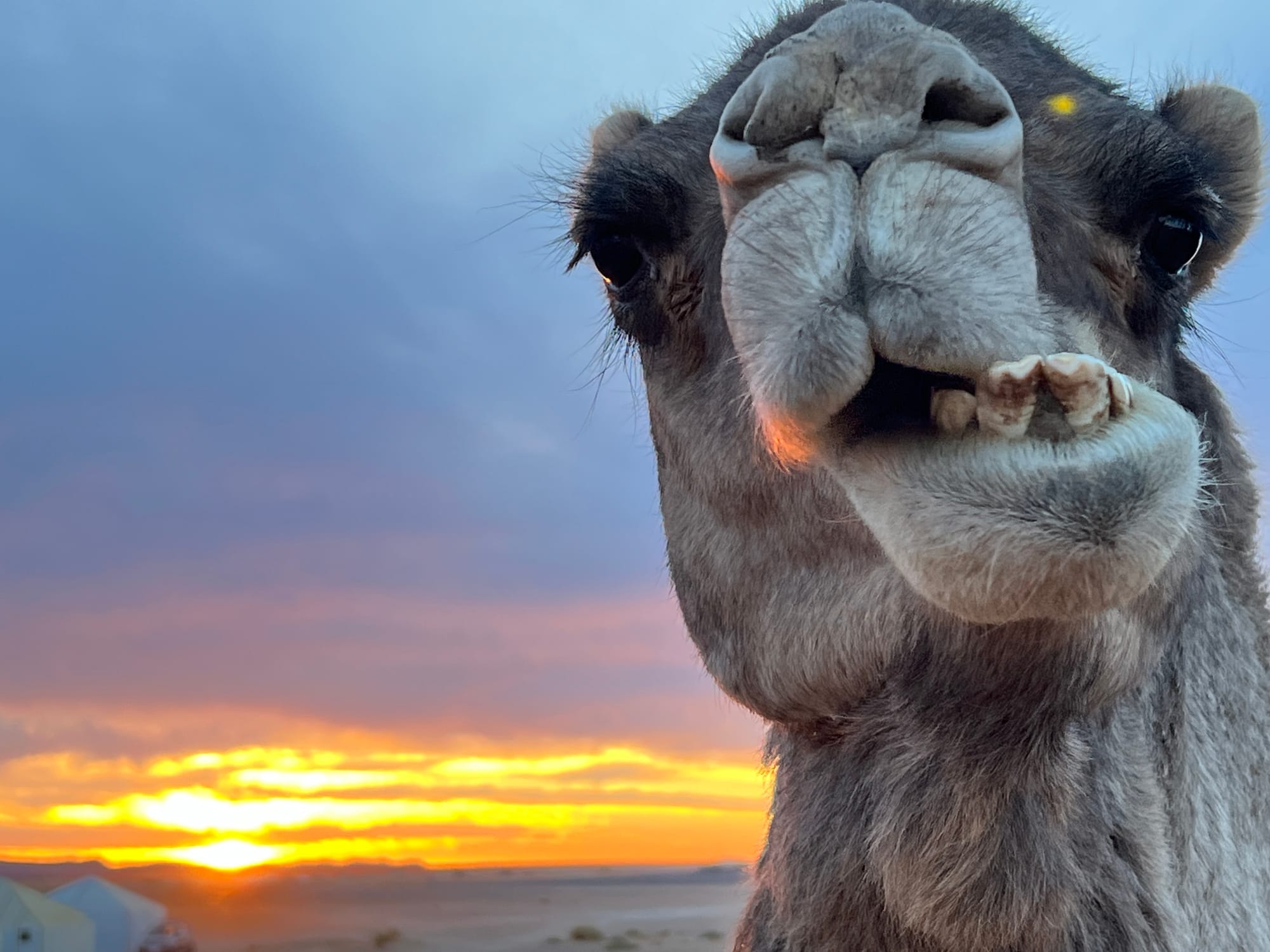
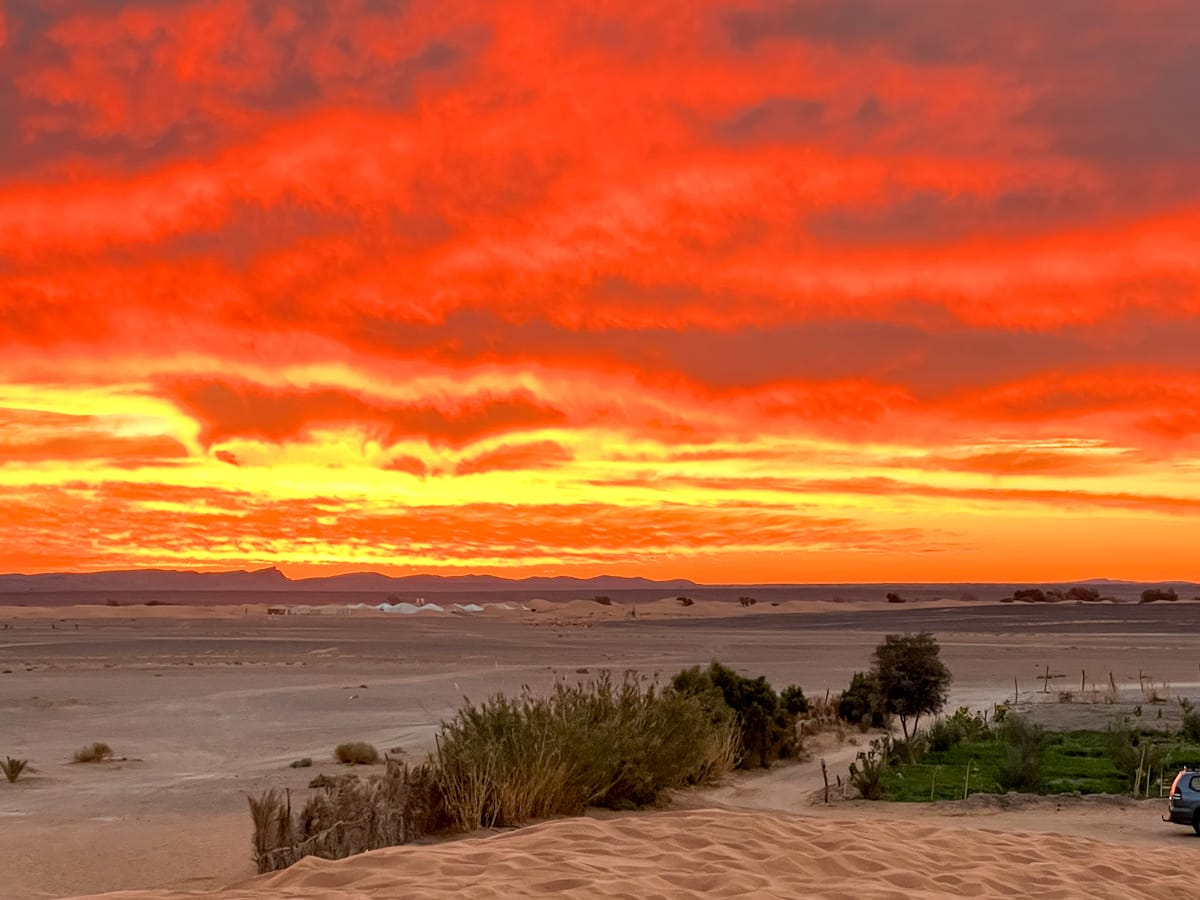

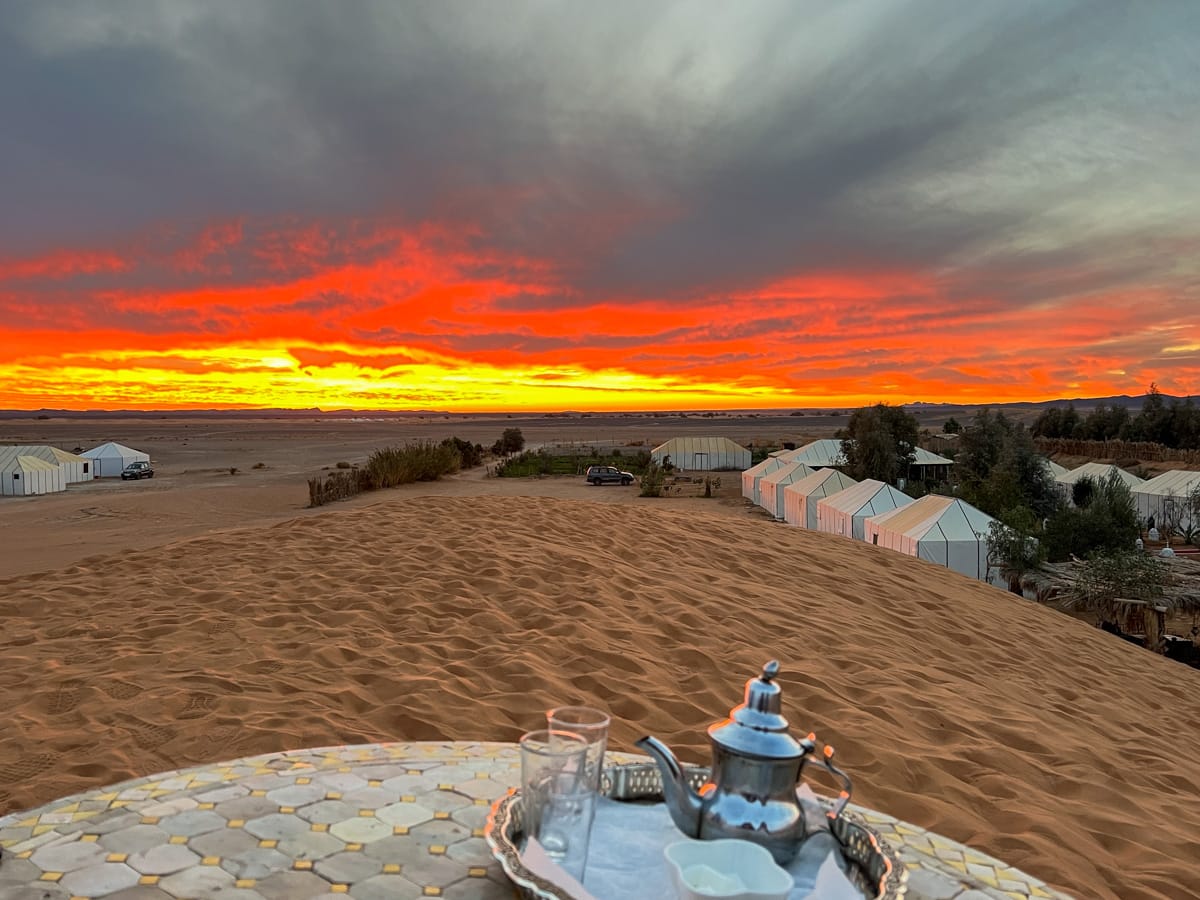
When faced with leaving on a camel or in the car, I jumped at the chance to go back in the car. It was surprising how quickly we made it out of the desert.
Nearby, we went to see Khamlia Gnawa - the Black Musicians. "For centuries, black Africans from the Gnawa tribe, originating from sub-Saharan countries such as Sudan, Mali and Niger, were forcibly moved from their homelands across the Sahara to Morocco as part of the worldwide slave trade. Shackled in chains as they crossed the desert, they sang to soothe and found mindfulness in the rhythmic chanting and clanking of the chains.
Today, there is a small village in the Moroccan Sahara whose inhabitants are direct descendants of these enslaved people, and this is the story of Khamlia Village.
Although Islam started to take hold in Morocco in the 11th century, it took a long time to find its way through the wild and inhospitable terrain and wasn't fully imposed until the 18th century. As slavery is forbidden in Islam, it was at this point that these slaves in Sijilmasa, today known as Rissani, were granted freedom."
They make beautiful music.



We listened to them for about 30 minutes, then moved on to walking an Oasis in the area.Seven local families hold this Oasis property. They can then grow produce and other plants. They control how the water flows through the Oasis by blocking off one row and opening them on a shared schedule.
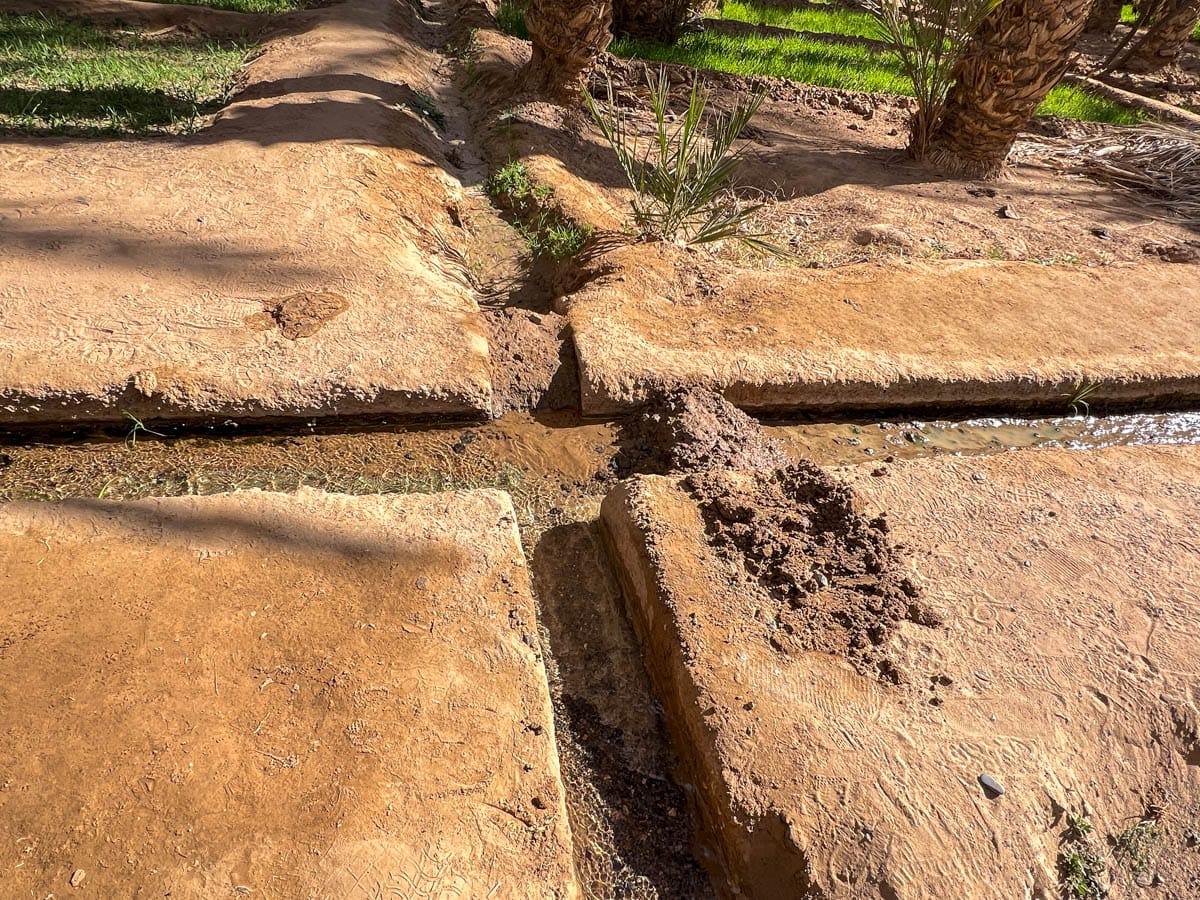
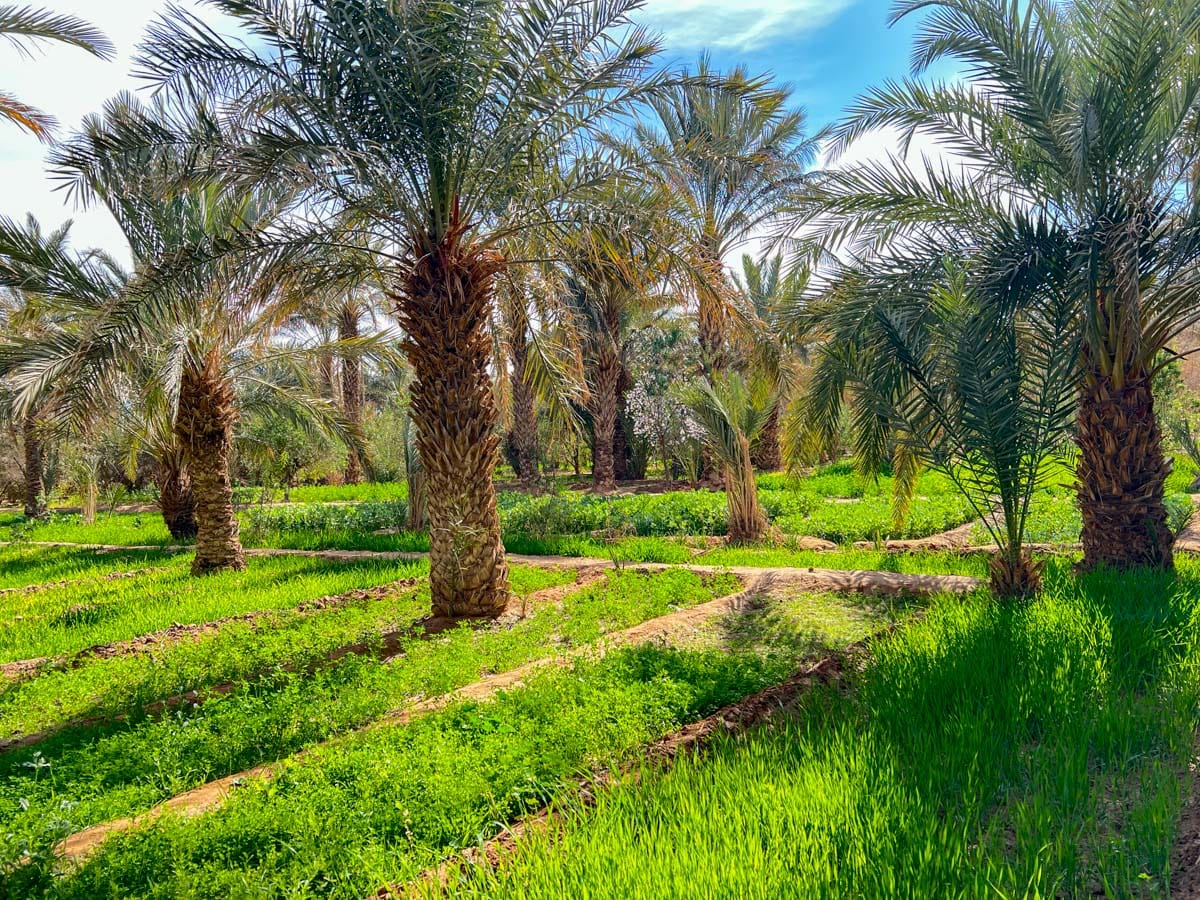

The way the wells are constructed water is brought into the Oasis.
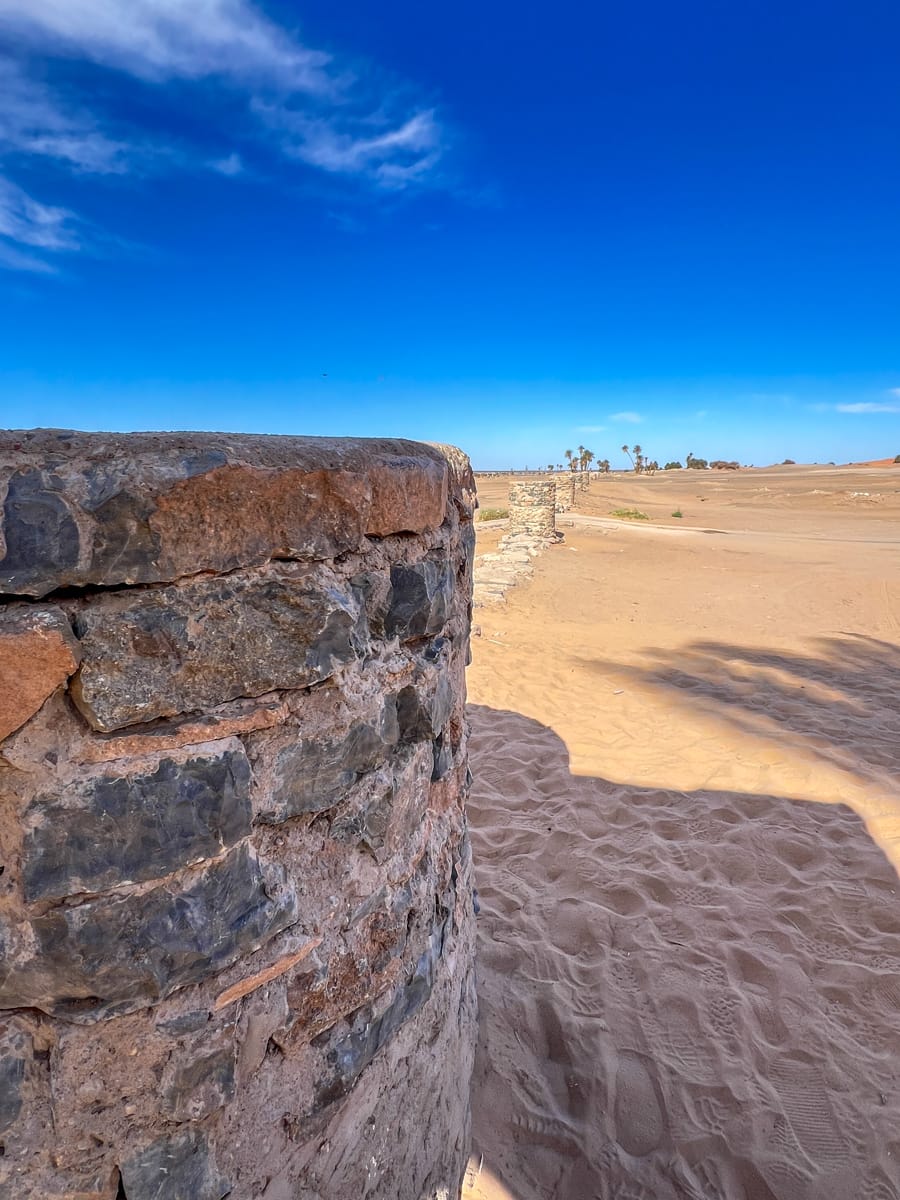
From there, we attended the Morocco Nation 4x4 Auto Museum. This bizarre museum is in the tiny community of Merzouga. It has a collection of 4x4s from the early 1900s to 2014. One person owns all of the vehicles, which seems like an unusual hobby in the middle of Morocco. https://automuseums.info/morocco/morocco-national-auto-museum
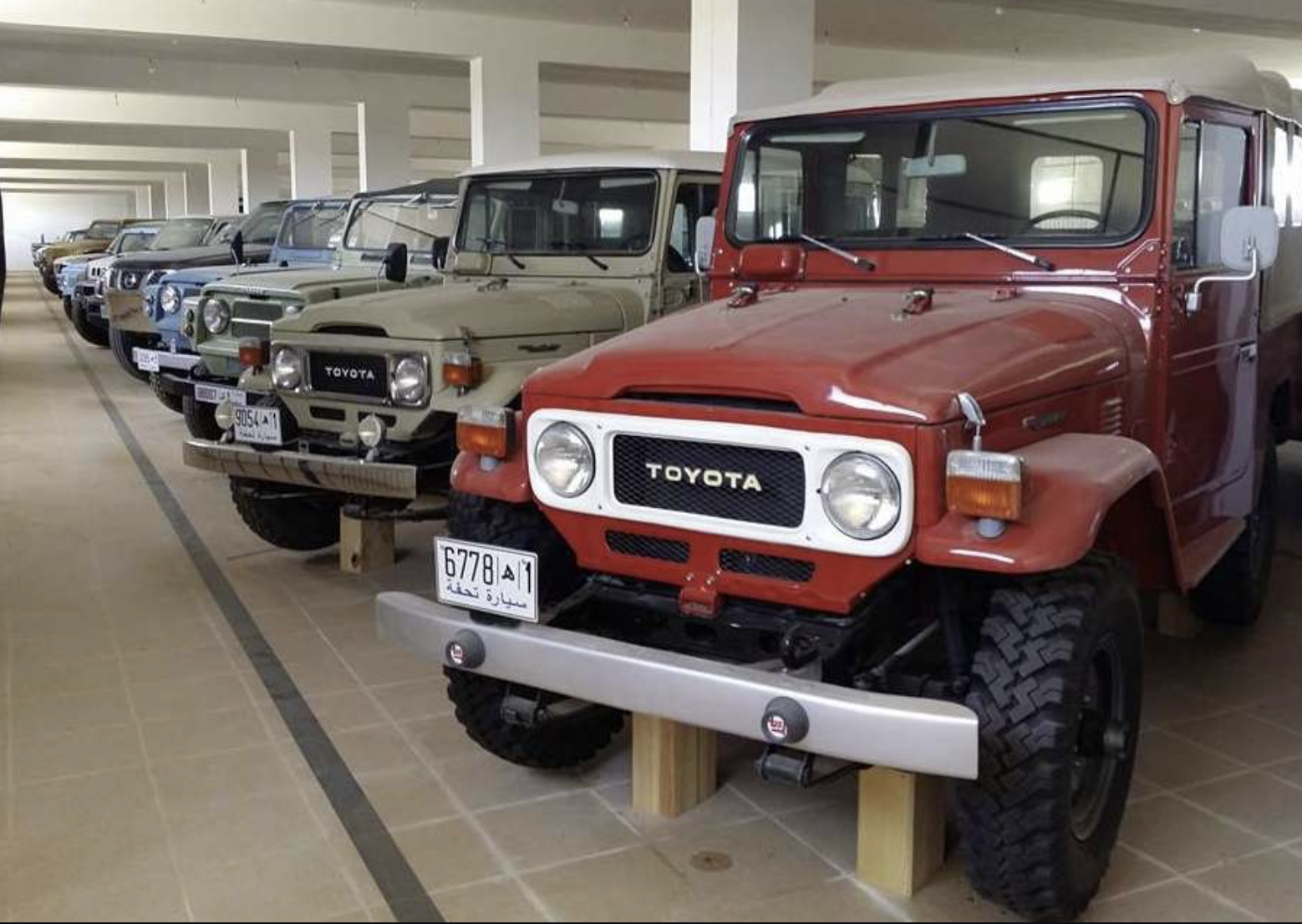
I was then taken to Kasbah Hotel Tombouctou, a luxurious hotel on the edge of the Sahara with its pools and spa facilities, which I took advantage of by having a massage. Which I really appreciated.
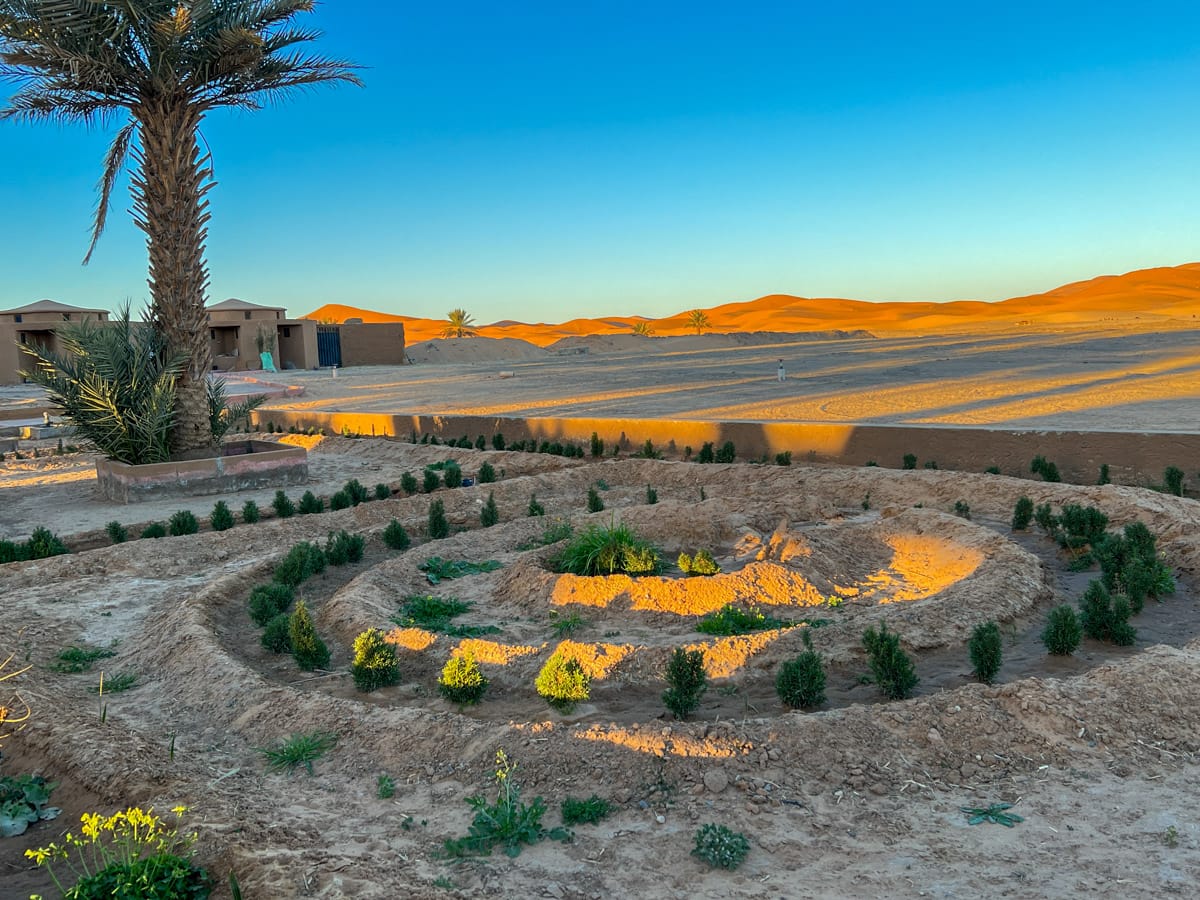
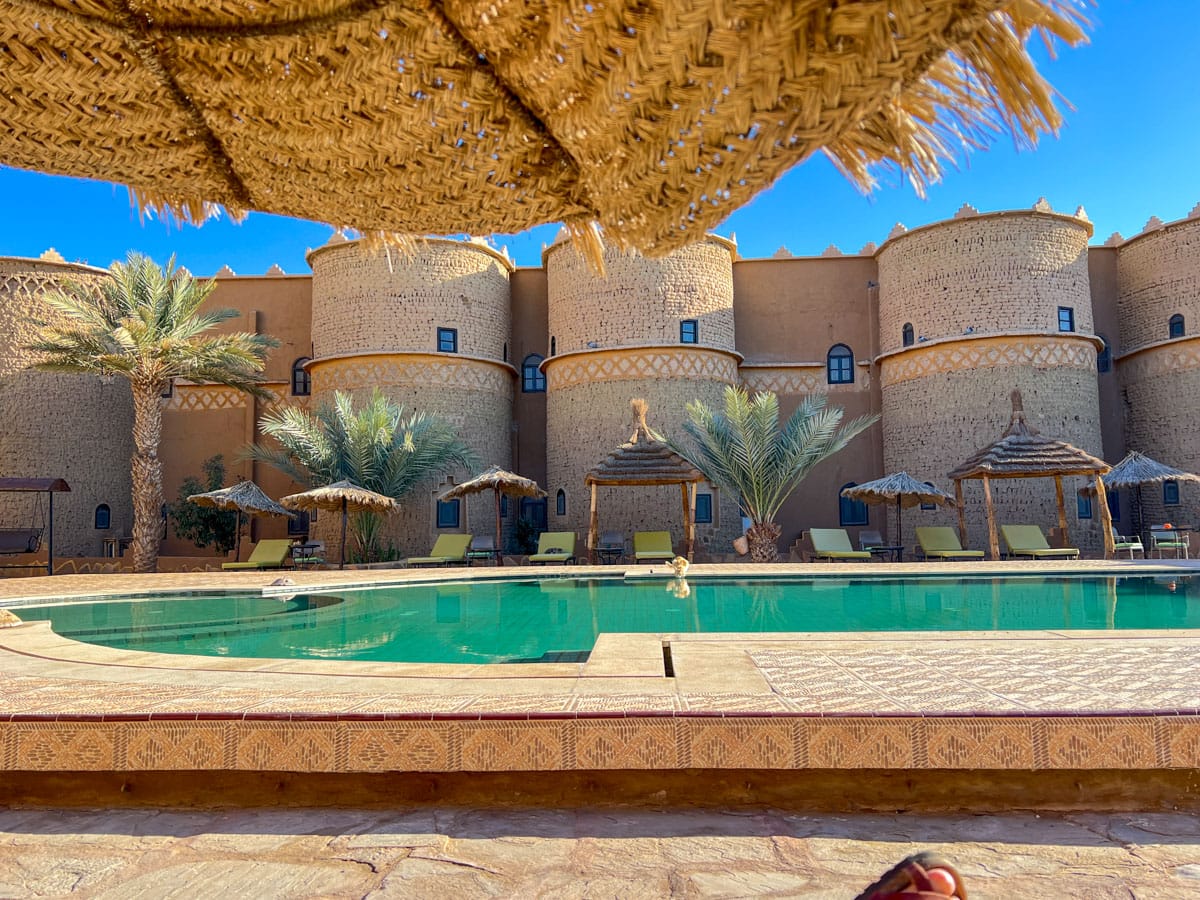


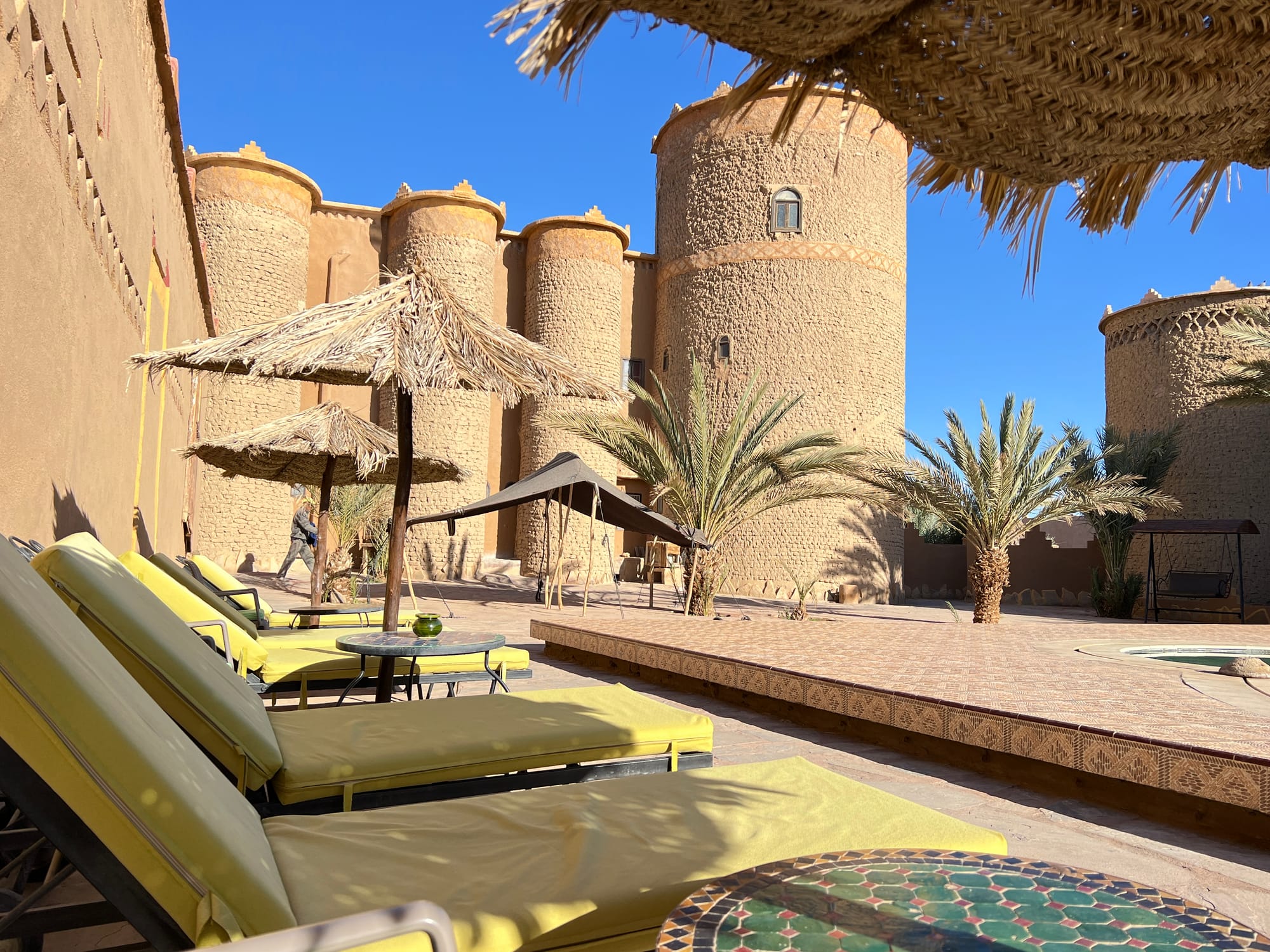
Remembering and savouring that massage now, I will sign off.
Until next time.......
Remember to subscribe.

